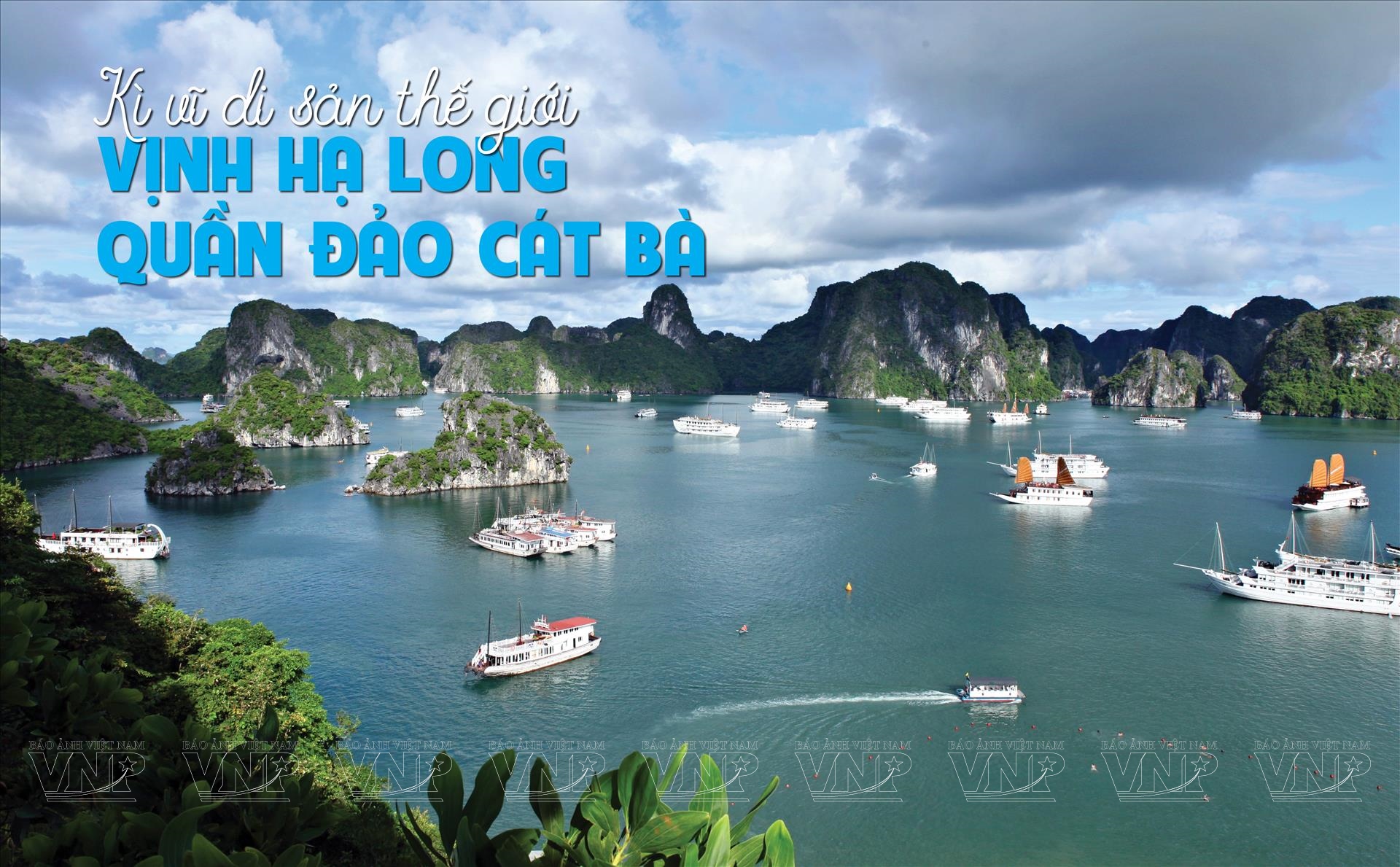

The world has known a lot about Ha Long Bay, a famous landscape of Vietnam that was twice recognized by UNESCO as a World Natural Heritage in 1994 and 2000. Ha Long Bay has an area of 1,553 square kilometers with 1,969 islands, of which 90% are limestone islands, with heights ranging from 50m to 200m, formed more than 500 million years ago through complex tectonic movements and strong, long-term karst weathering, creating islands with unique shapes. In particular, in the core area of the Bay, about 330 square kilometers wide, there are dense clusters of more than 770 large and small islands.
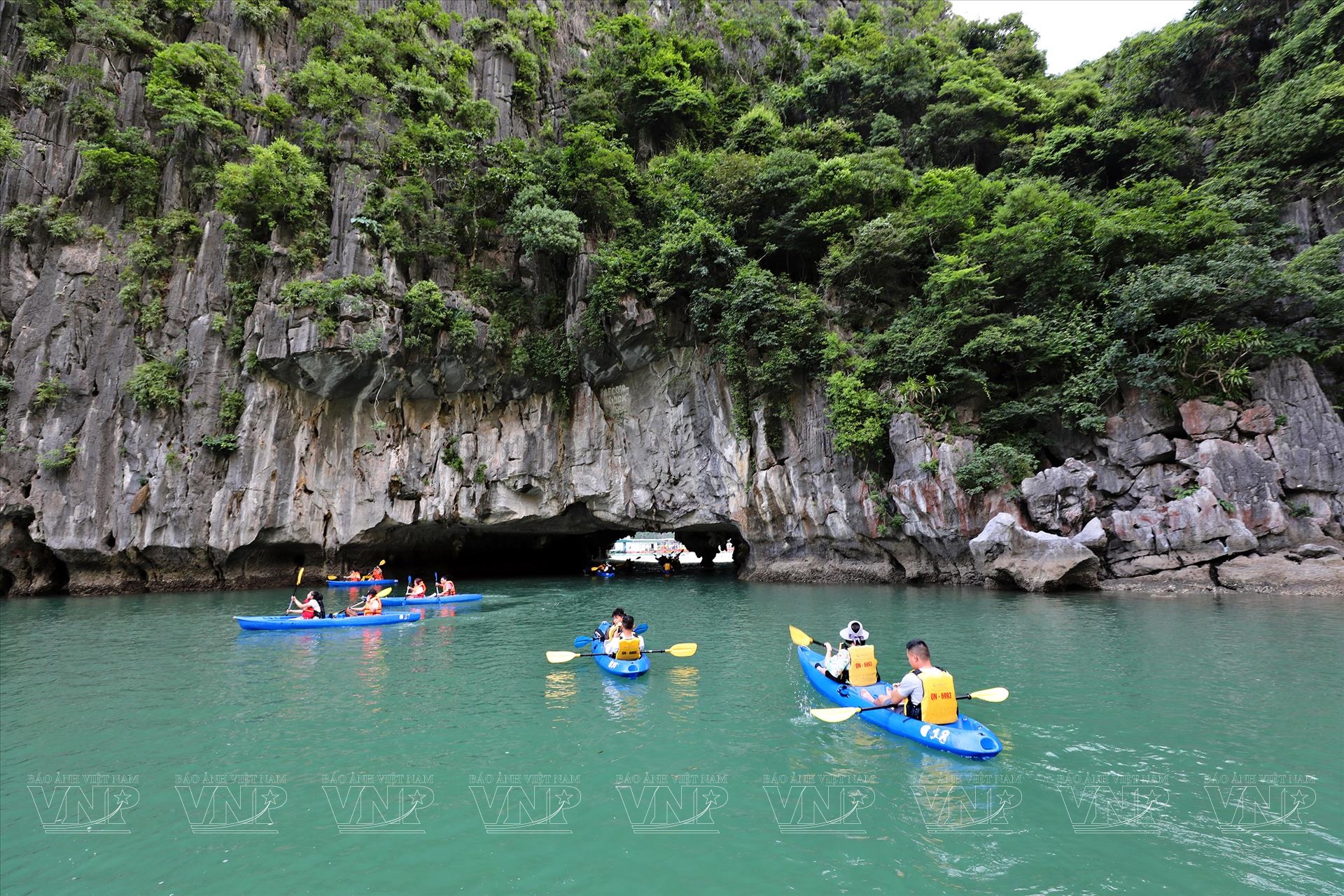
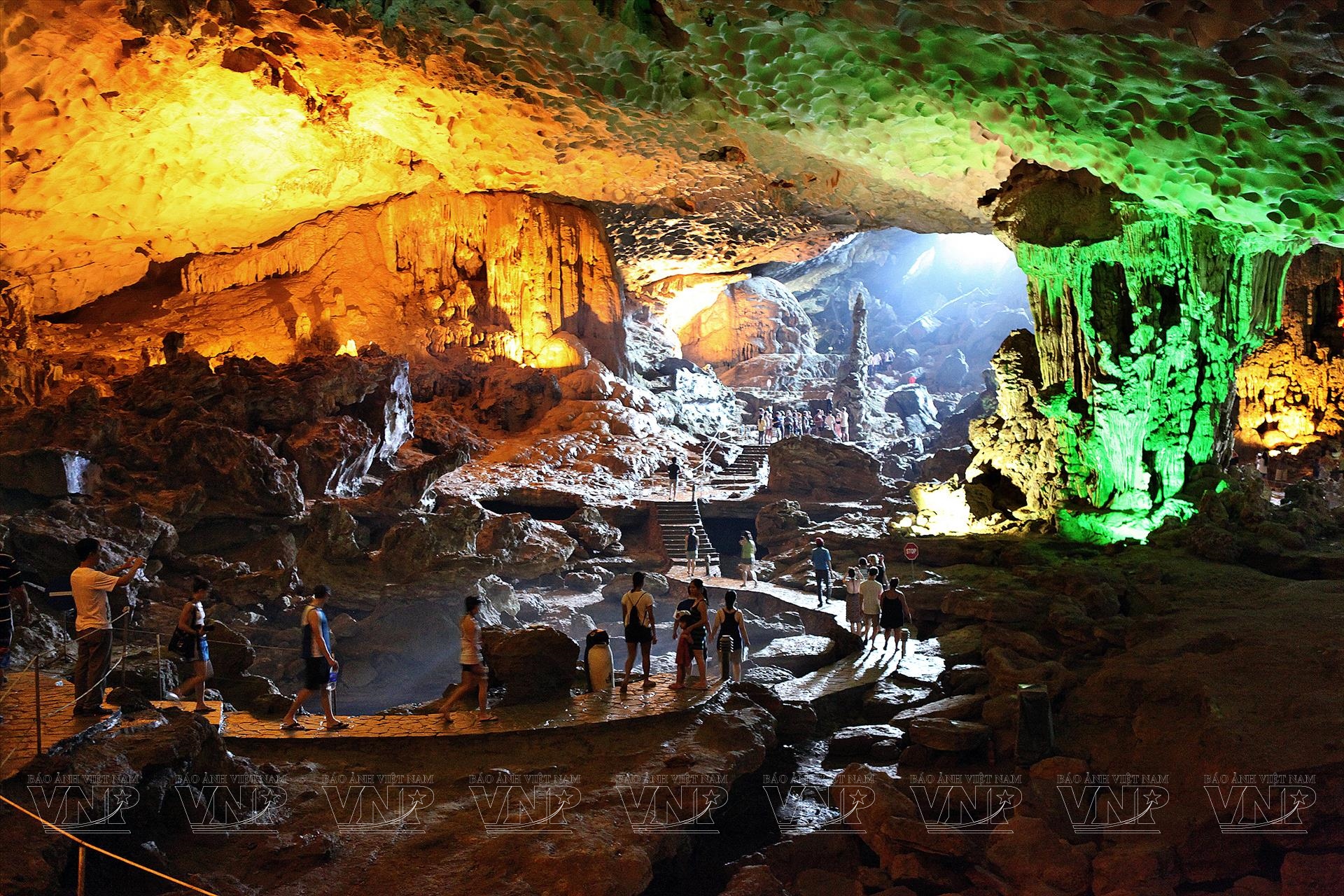
The islands and caves in Ha Long are diverse. Based on their shapes and rich imagination, people have given them many different interesting names such as: Rooster and Hen Island, Dragon Island, Toad Island, Beaver Head Island, Horse Saddle Island, Fighting Cock Island, Beetle Island, Incense Burner Island, Chopsticks Island, Crescent Island, Conical Hat Island, Ear Island, Human Head Island, Buddha Island, Sung Sot Cave, Virgin Cave... With its majestic beauty, in recent times, the World Natural Heritage Ha Long Bay has always been the top destination for domestic and international tourists, contributing to economic growth and promoting the image of Vietnam.

If Ha Long Bay has been twice honored by UNESCO as a World Natural Heritage, then right next to it, Cat Ba Archipelago of Hai Phong city has also been recognized as a World Biosphere Reserve since 2004.
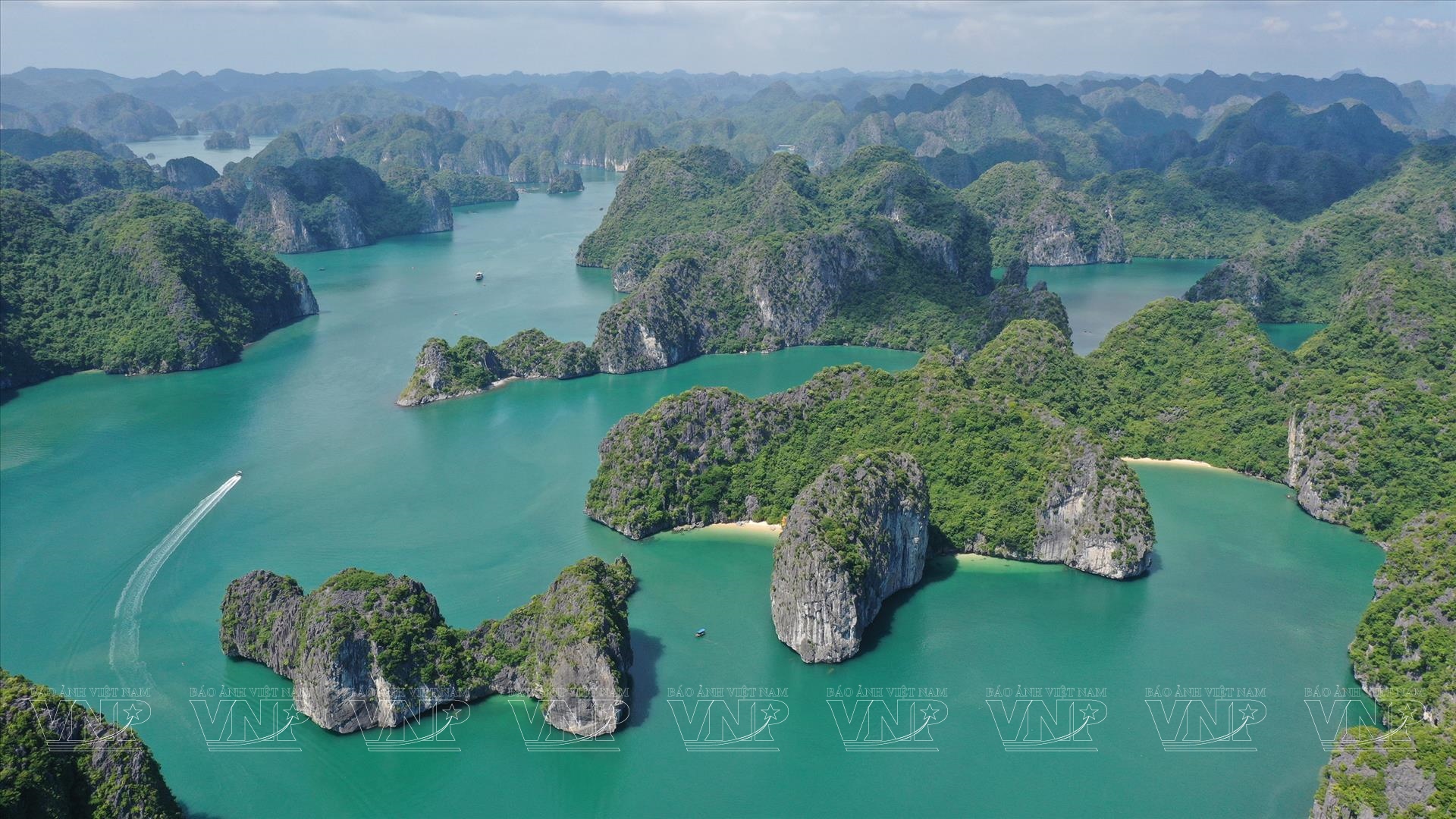 Lan Ha Bay area. Photo: Cong Dat/Vietnam Pictorial Newspaper
Lan Ha Bay area. Photo: Cong Dat/Vietnam Pictorial Newspaper In 2013, Vietnam built a dossier to nominate Cat Ba Archipelago as a World Natural Heritage. However, with the recommendation of the World Heritage Committee, Vietnam has researched and completed the dossier on the basis of merging Cat Ba Archipelago with Ha Long Bay to form a new heritage complex with a larger, more diverse and unique scale. On September 16, 2023, at the 45th session of the World Heritage Committee held in Riyadh (Saudi Arabia), UNESCO officially approved the nomination dossier, recognizing Ha Long Bay - Cat Ba Archipelago (belonging to Quang Ninh province and Hai Phong city) as a World Natural Heritage. The recognition of Ha Long Bay - Cat Ba Archipelago as a World Natural Heritage not only creates the first unique inter-regional world heritage in Vietnam but also increases the value of this vast, majestic and beautiful heritage area. Speaking specifically about the Cat Ba Archipelago, this place has a total area of 336 km², located in the middle of the Gulf of Tonkin, about 30 km from the center of Hai Phong City. The whole area has 358 large and small limestone islands clustered together with high density, dividing the sea surface into small bays and many sandbanks, creating a wild and interesting landscape.
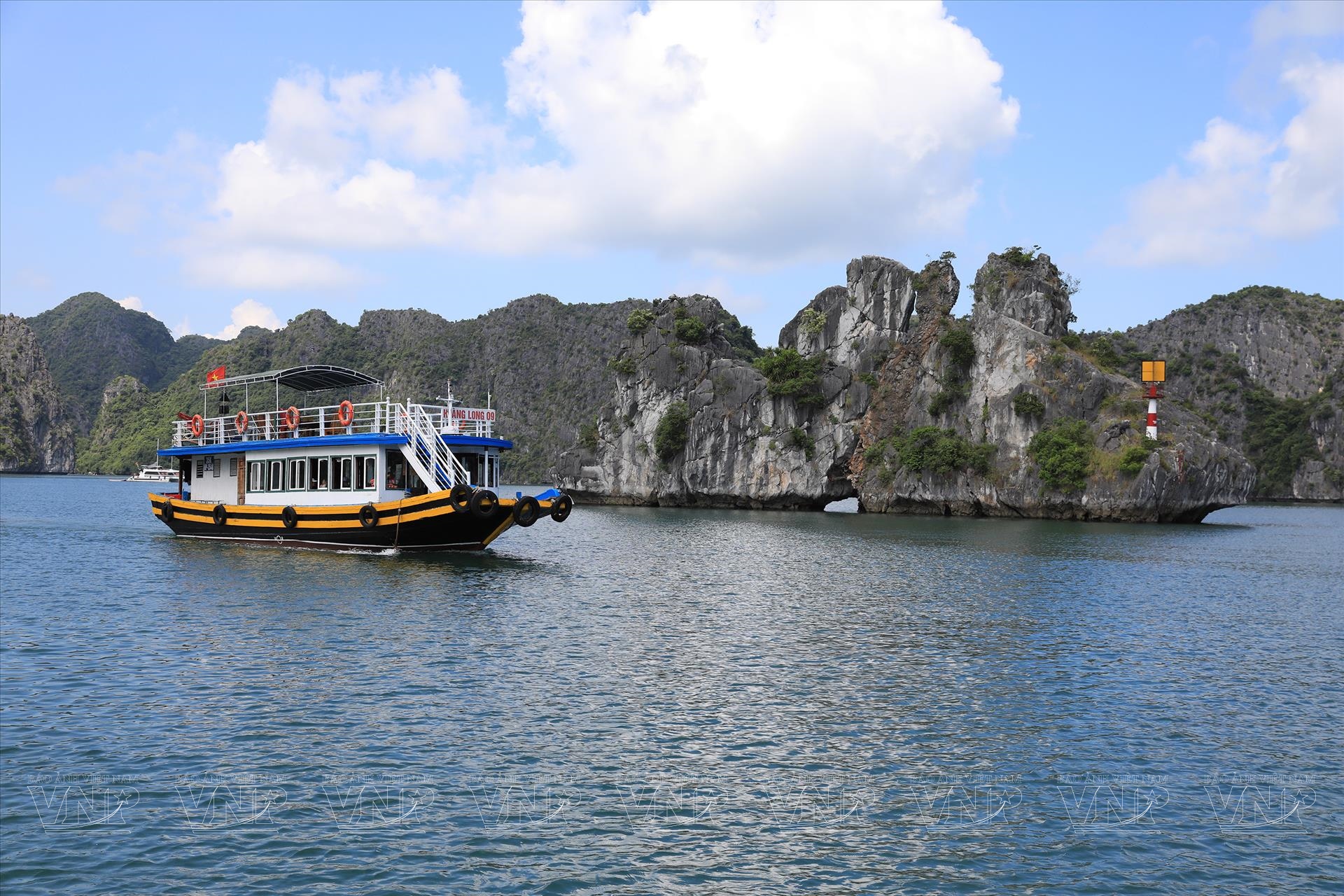
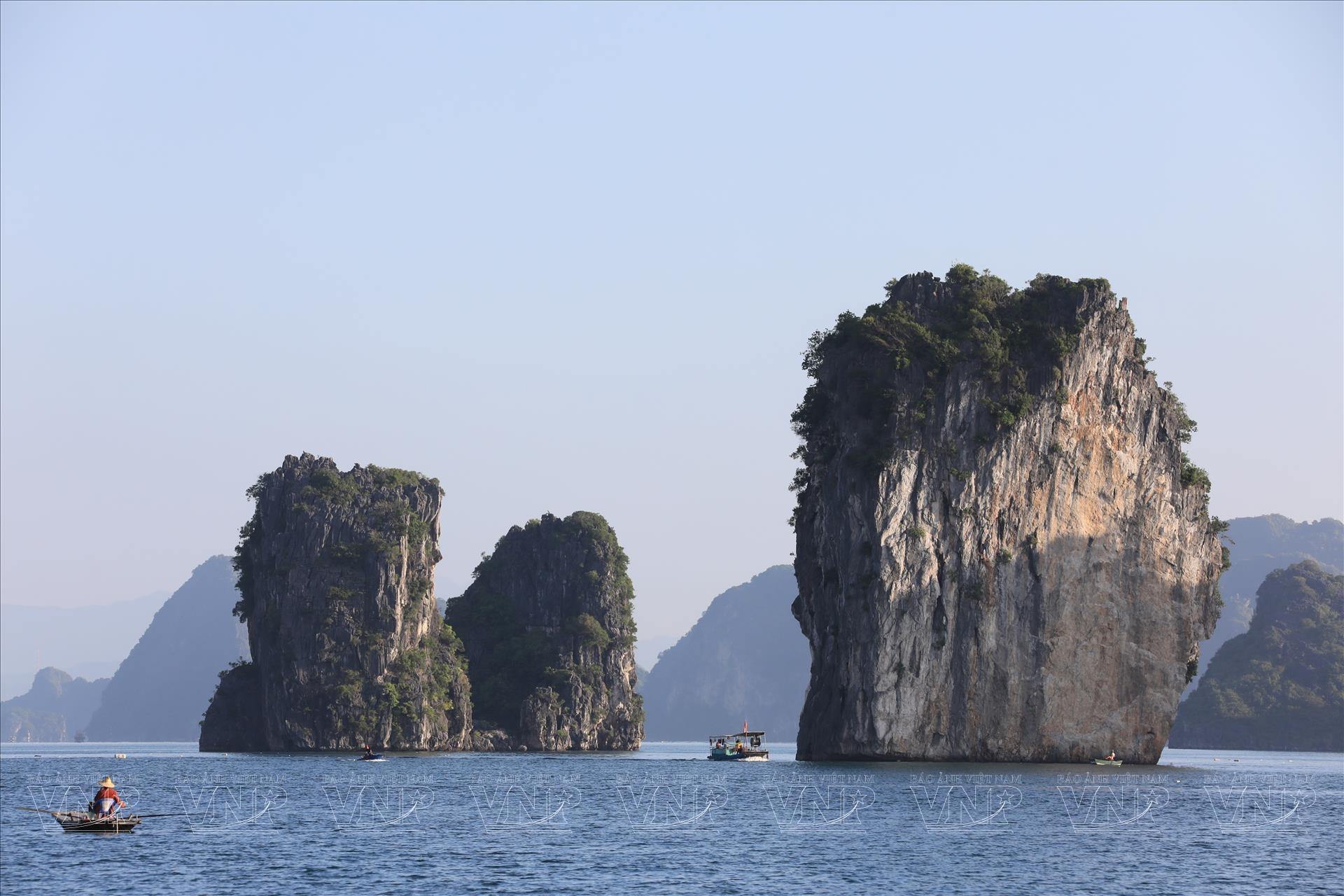
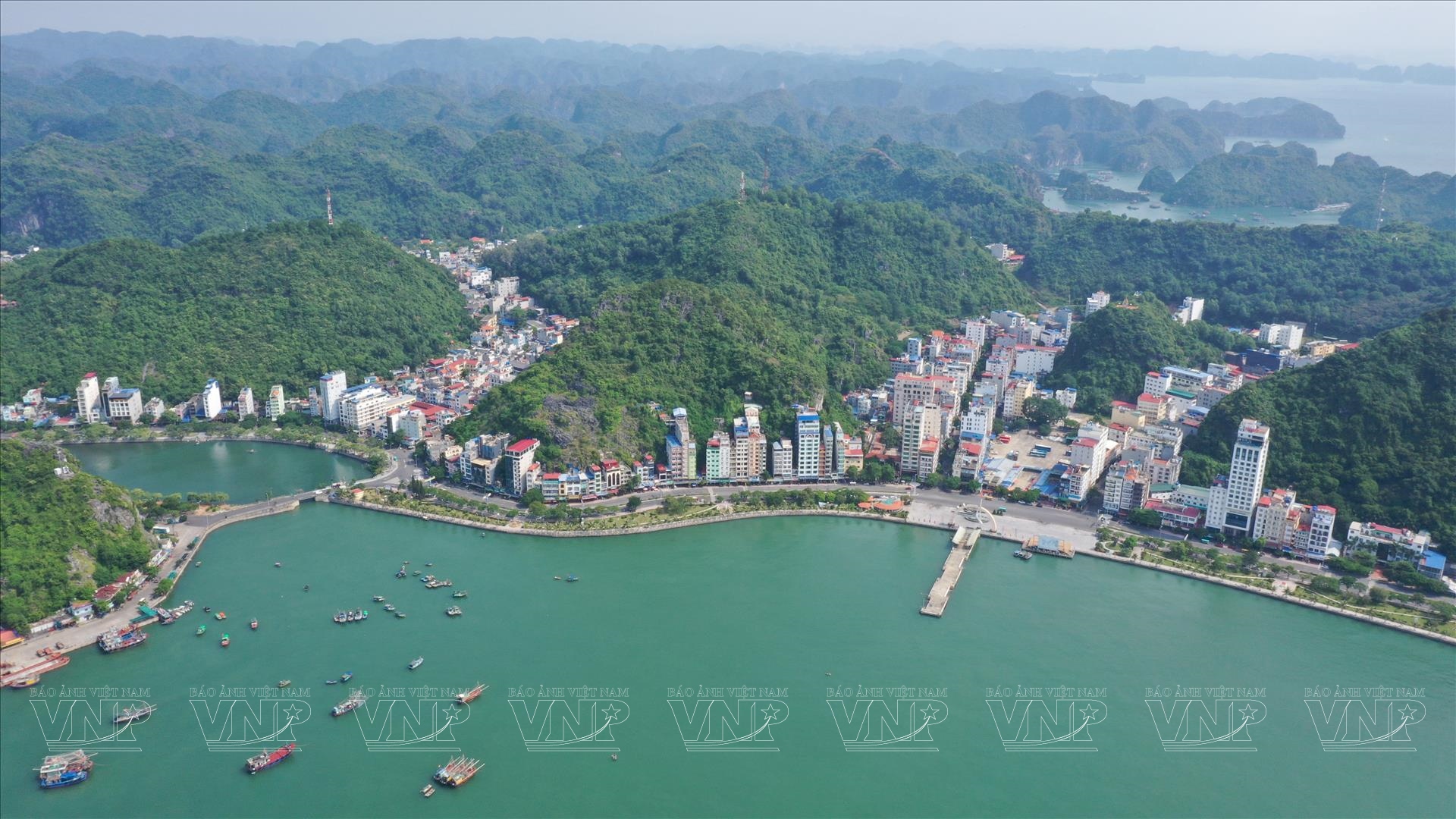 Panoramic view of Cat Ba town from above. Photo: Cong Dat/Vietnam Pictorial Newspaper
Panoramic view of Cat Ba town from above. Photo: Cong Dat/Vietnam Pictorial Newspaper Cat Ba Island is the largest island, with an area of 153km², the third largest island in Vietnam, after Phu Quoc and Cai Bau, with the highest mountain peak reaching 331m. This is a submerged tropical karst terrain area, with a unique landscape similar to Ha Long Bay. The islands are often pyramidal or karst tower-shaped with steep cliffs standing out on the clear blue sea. On Cat Ba Island, there are many famous caves and beautiful places such as Trung Trang Cave, Hung Son Cave, Gia Luan island commune, Viet Hai ancient fishing village... Cat Ba archipelago has tropical rainforests on limestone islands, mangrove forests, coral reefs, seaweed beds - seagrass, cave systems, lakes... which are places that fully converge biodiversity conservation values, ensuring the requirements of the World Biosphere Reserve according to UNESCO regulations. In the cool autumn weather, we had a tour to explore Cat Ba archipelago. Following the advice of the local people, we started our journey with a tour to explore "Lan Ha Bay - Sang Cave, Toi Cave - Viet Hai Village - Cat Dua Island". This is the most typical tour of Cat Ba. The group rented a small wooden boat from the locals to move from Cai Beo wharf to Lan Ha Bay. Lan Ha Bay is located in the east of Cat Ba Island, where the islands are densely clustered, forming more than a hundred natural beaches with clear, cool water. In Lan Ha Bay, visitors can use kayaks to move on the clear blue water to see the coral reefs at Van Boi beach, Van Ha beach, see the islands of many shapes such as But island, Con Rua island, Nui Doi island... and explore caves such as Sang cave, Toi cave, Vem cave, Ham Rong cave... with an extremely refreshing feeling in the middle of the ocean waves.
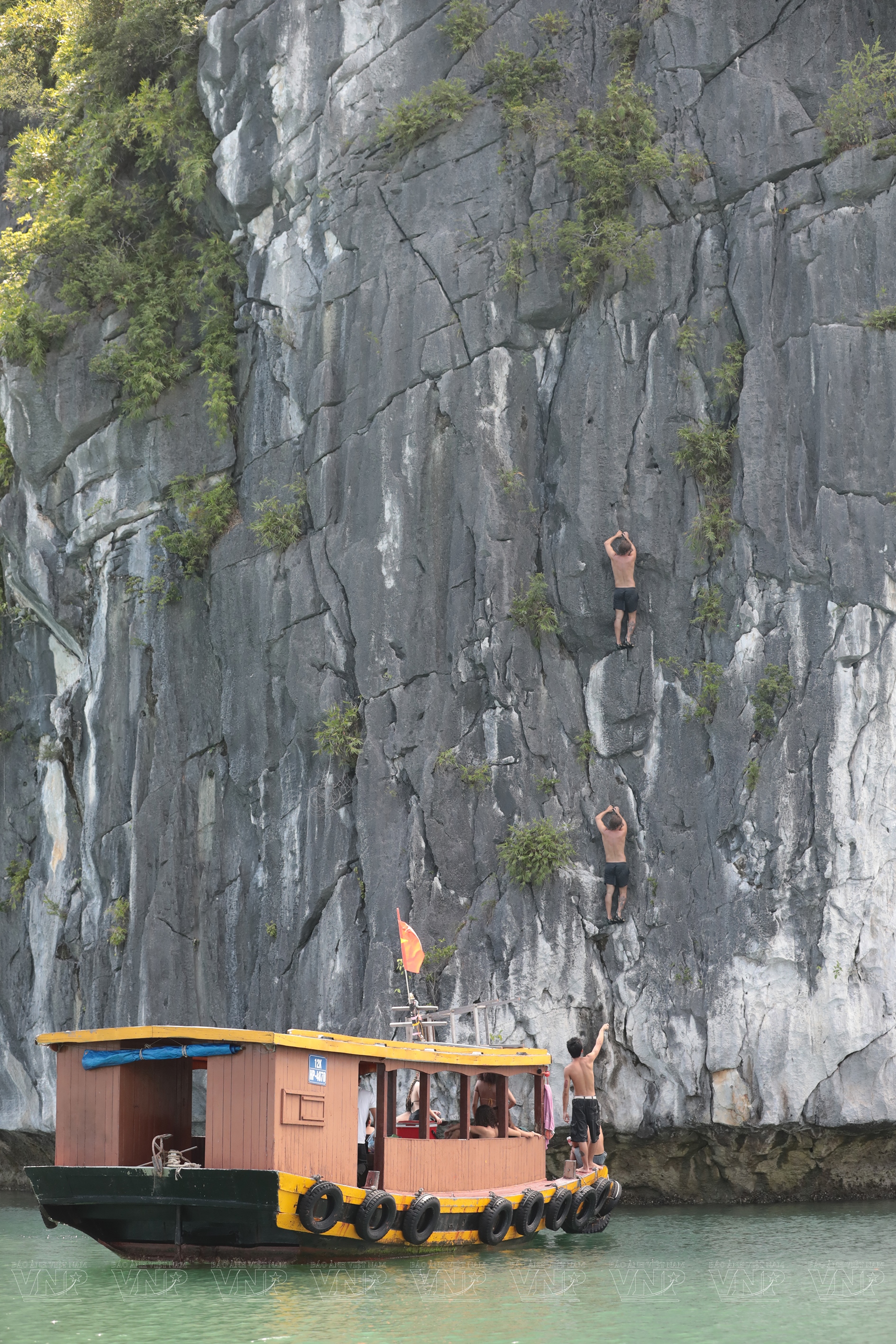
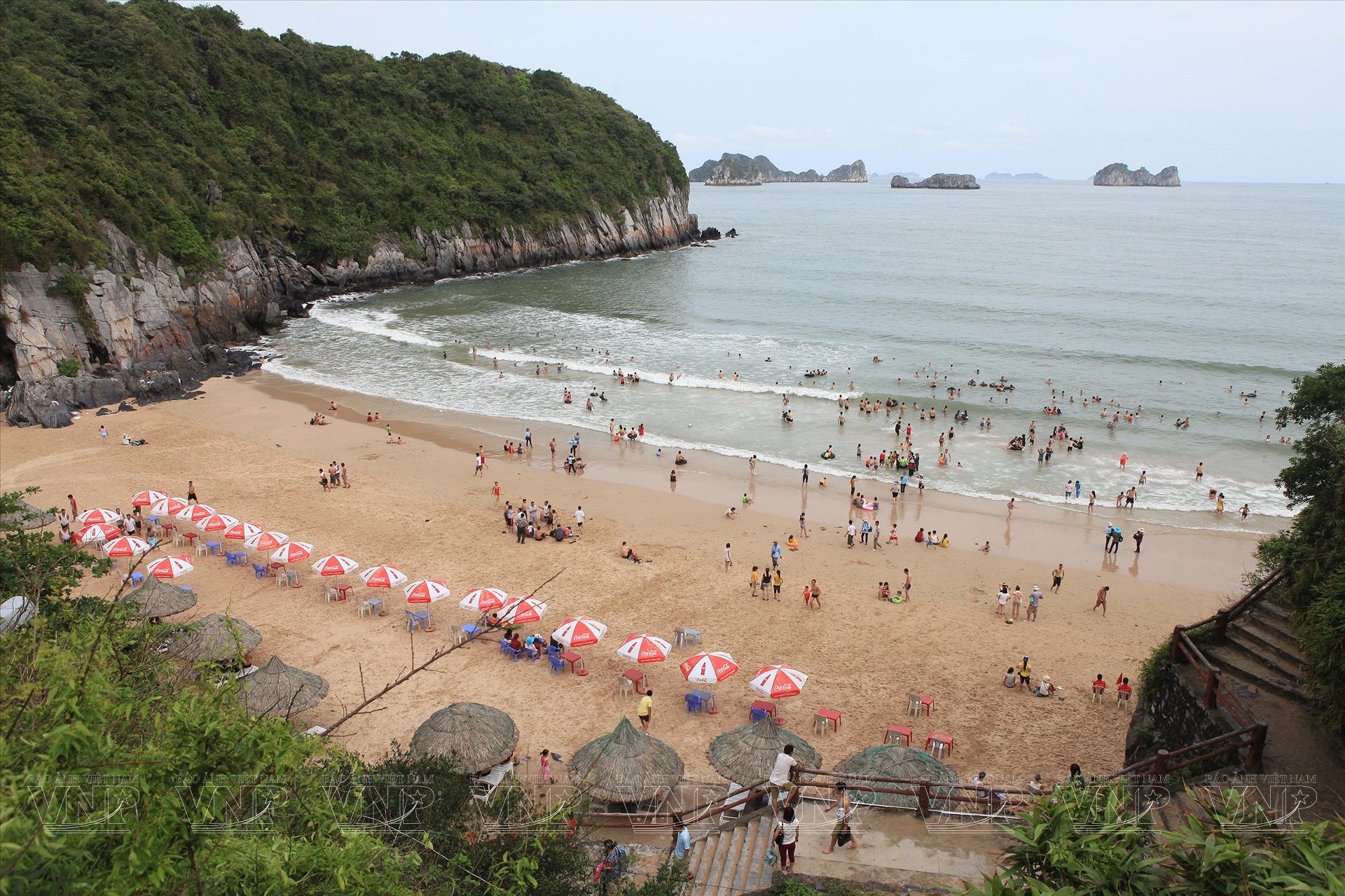
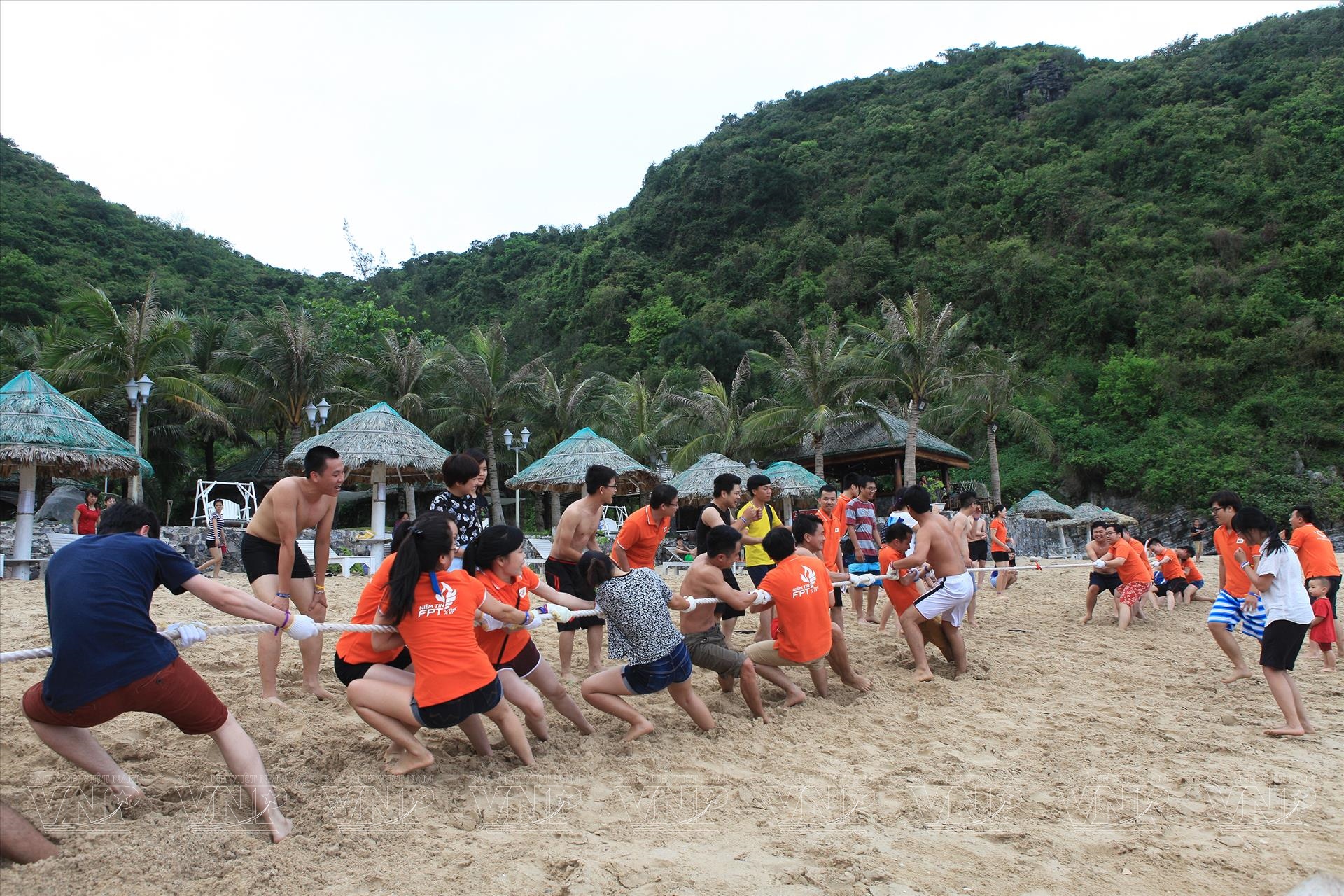
On the boat down Lan Ha Bay, we saw several groups of foreign tourists conquering the steep cliffs on the cliffs. It is known that Cat Hai district has planned 9 climbing routes to serve adventurous tourists. For example, Tien Ong island is one of the climbing spots chosen by many tourists because the cliffs have many beautiful stalactites.
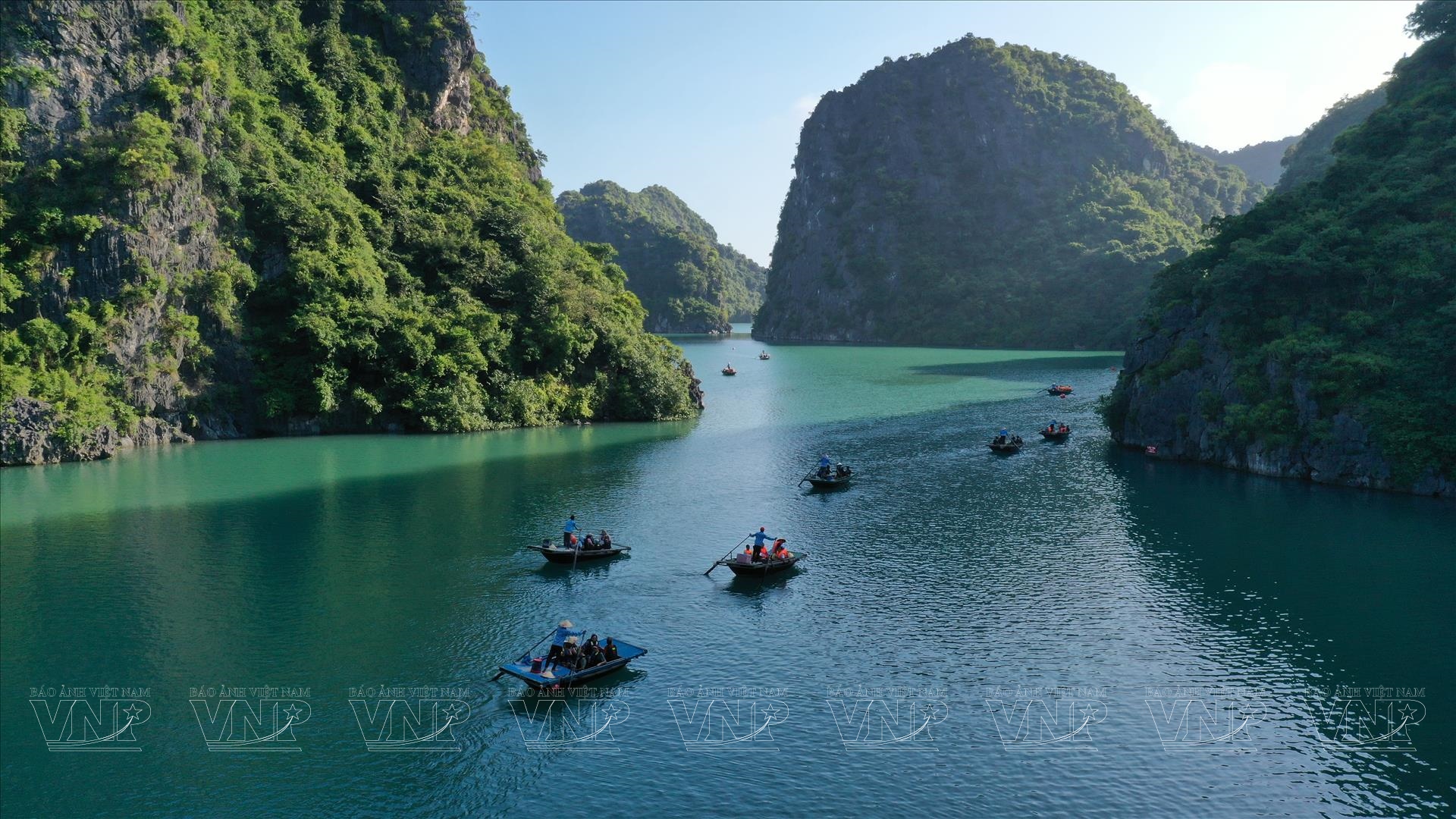 Tourists take a boat on Lan Ha Bay to visit and explore Sang Cave and Toi Cave. Photo: Cong Dat/Vietnam Pictorial
Tourists take a boat on Lan Ha Bay to visit and explore Sang Cave and Toi Cave. Photo: Cong Dat/Vietnam Pictorial 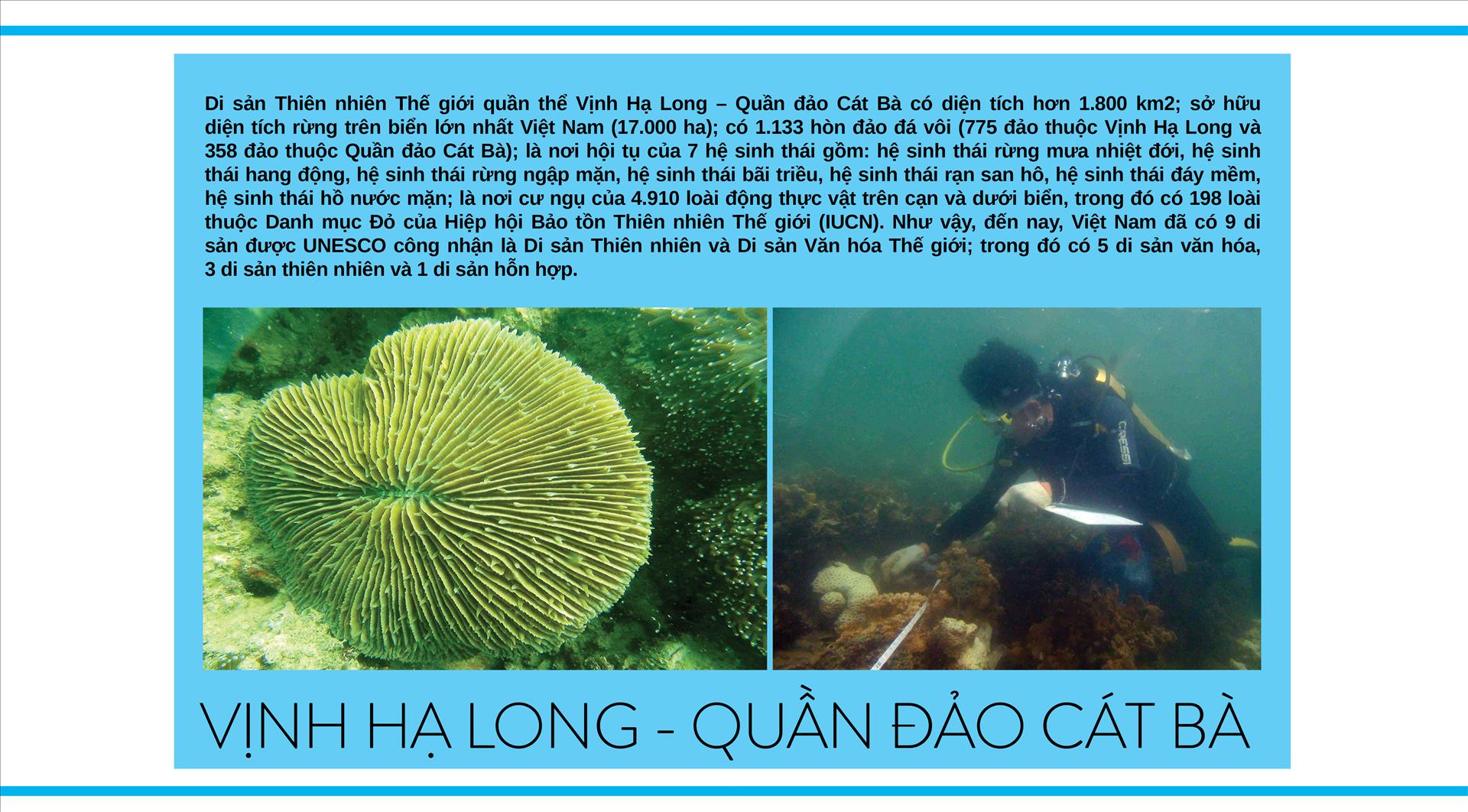 Tourists explore the marine ecosystem in Cat Ba National Park. Photo: Document
Tourists explore the marine ecosystem in Cat Ba National Park. Photo: Document The next stop is the ancient fishing village of Viet Hai, a community ecotourism destination that has attracted visitors in recent years. The ancient fishing village of Viet Hai has 90 households living in ancient houses nestled in the middle of a valley surrounded by rocky mountains and old forests. Foreign visitors often choose a trekking tour through the old forests of Cat Ba National Park (accompanied by staff from the Management Board) to reach the ancient fishing village of Viet Hai, then continue on a boat to explore Lan Ha Bay, this tour lasts about 4 hours.
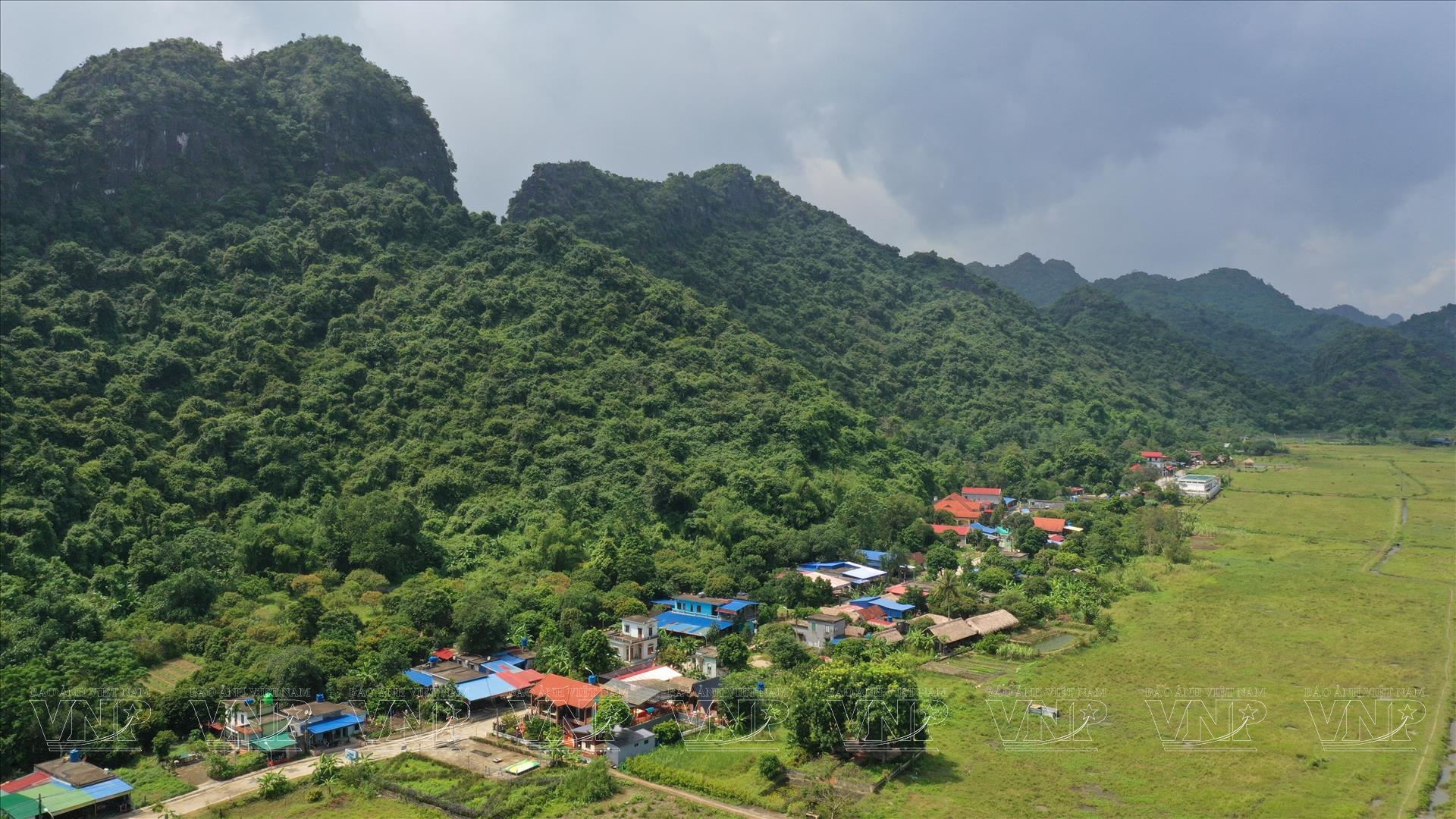 Panoramic view of the ancient fishing village of Viet Hai from above. Photo: Cong Dat/Vietnam Pictorial
Panoramic view of the ancient fishing village of Viet Hai from above. Photo: Cong Dat/Vietnam Pictorial 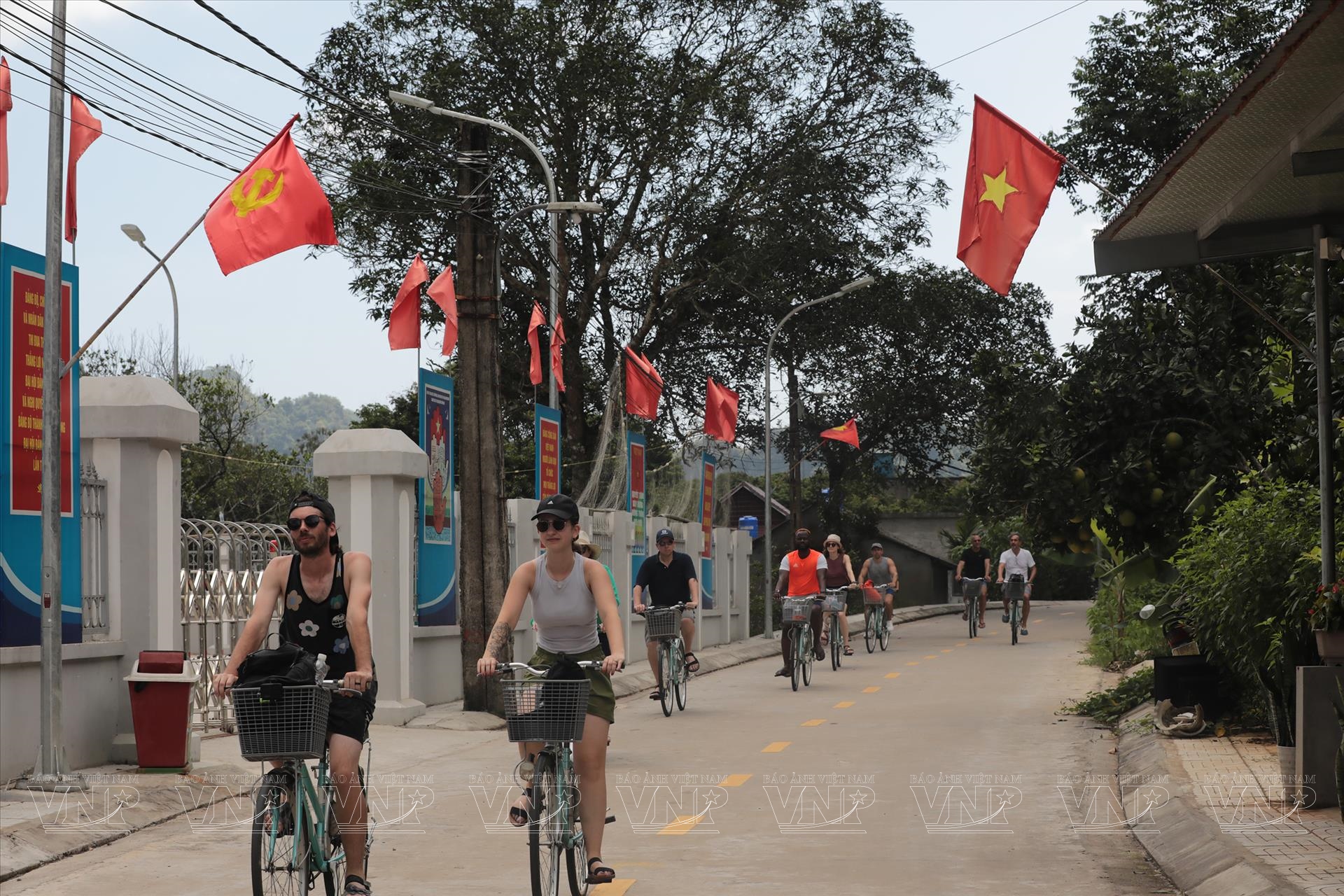
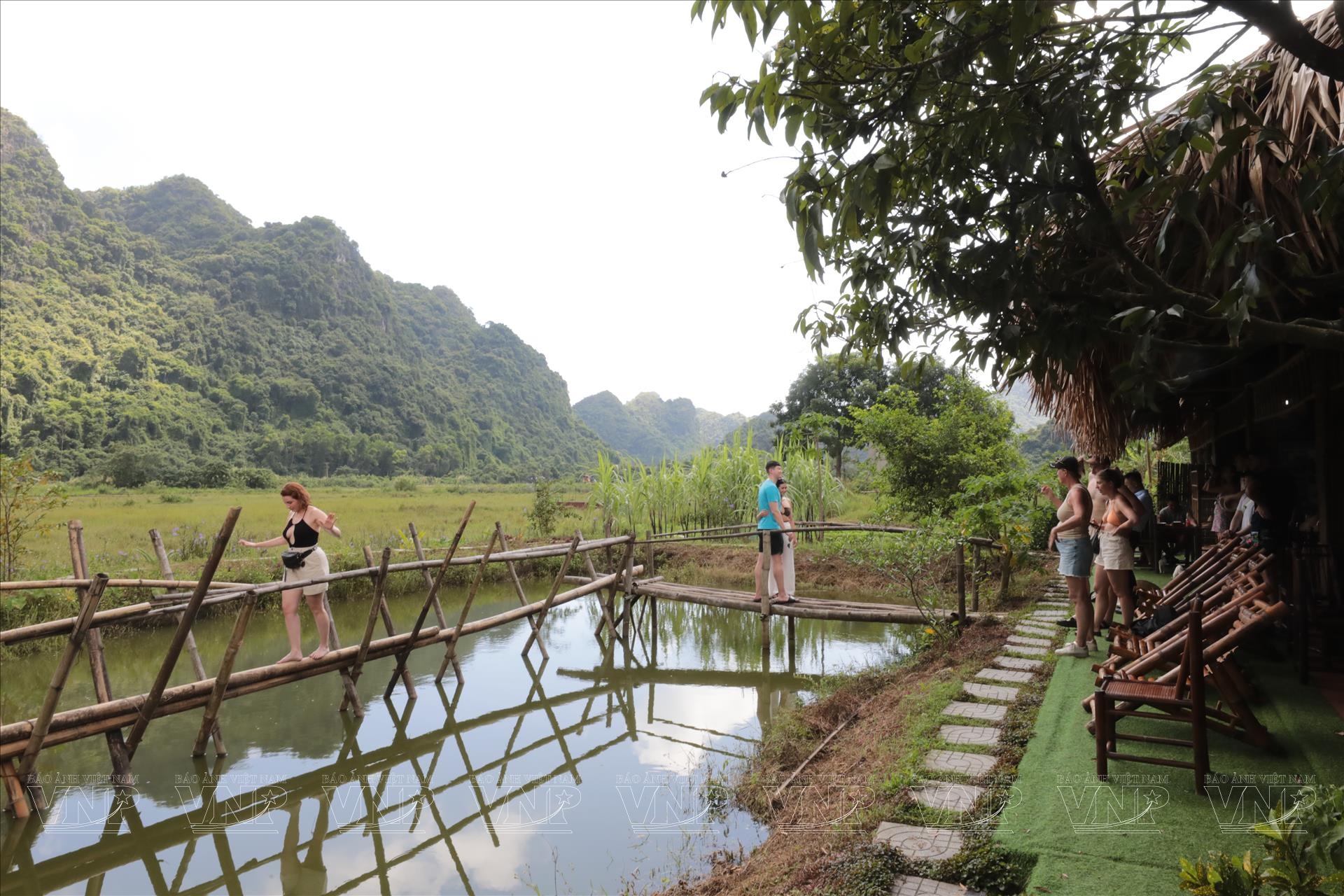
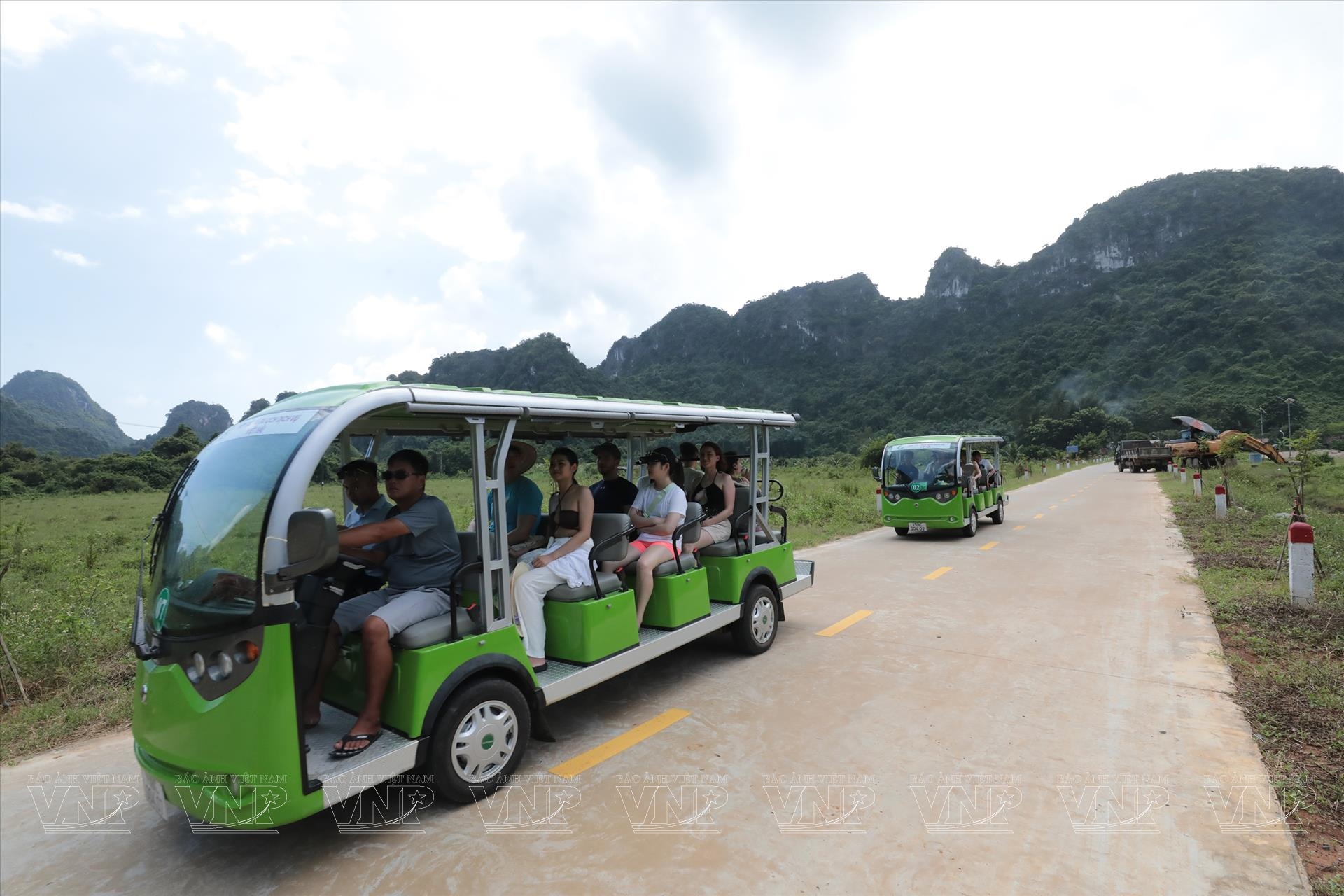
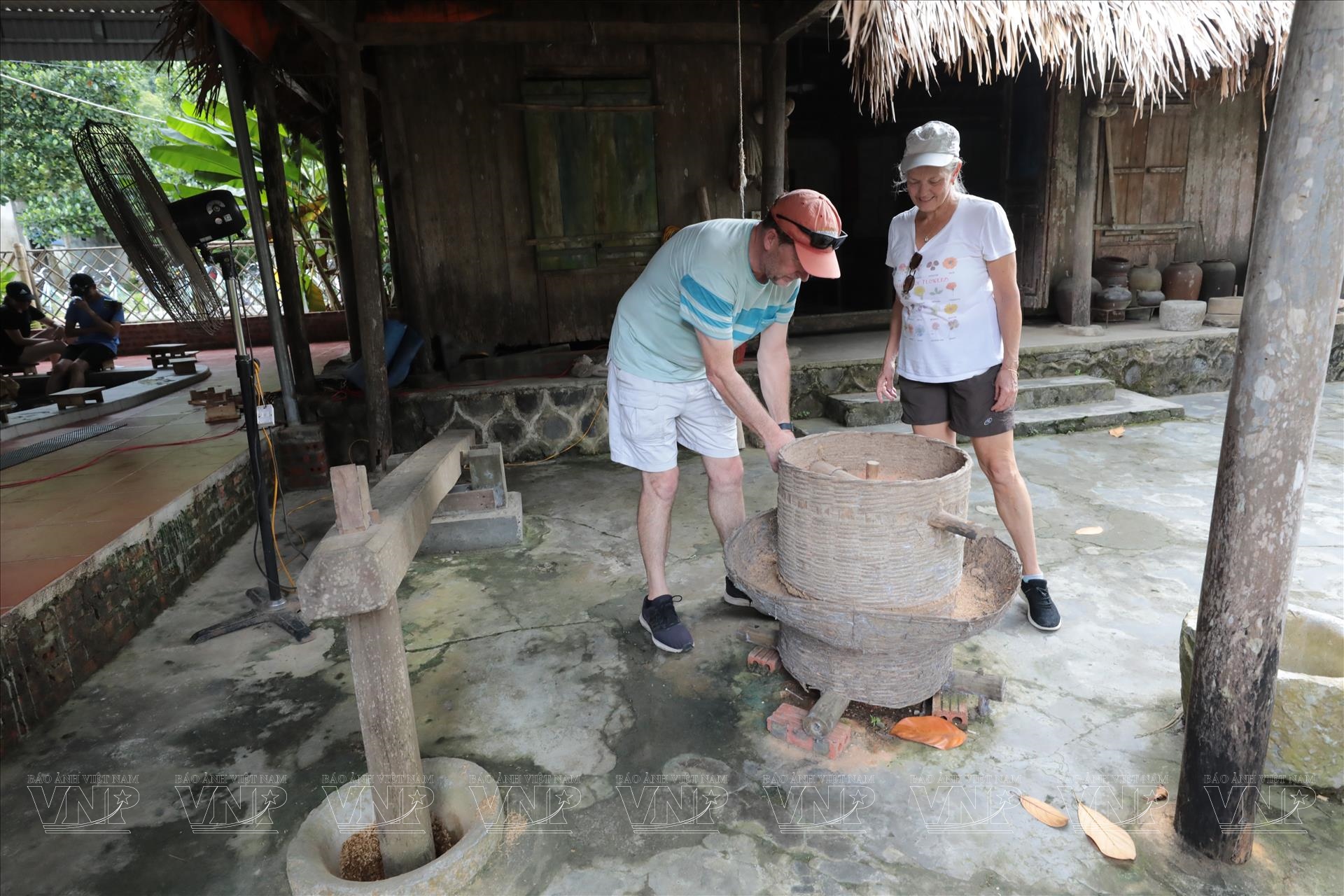 Tourists visit the ancient fishing village of Viet Hai. Photo: Thanh Giang/Vietnam Pictorial Newspaper
Tourists visit the ancient fishing village of Viet Hai. Photo: Thanh Giang/Vietnam Pictorial Newspaper There is another very beautiful and famous spot on Lan Ha Bay, which is Tung Gau Alley, which was used as a filming location in the Hollywood blockbuster Kong: Skull Island. The next day, we rented motorbikes to travel along the beautiful coastal passes and through the forest to Cat Ba National Park to enjoy the rustling sound of the forest wind and explore the endless beauty of the forest, where there are many precious medicinal plants and ancient trees with large roots extending all over the path.
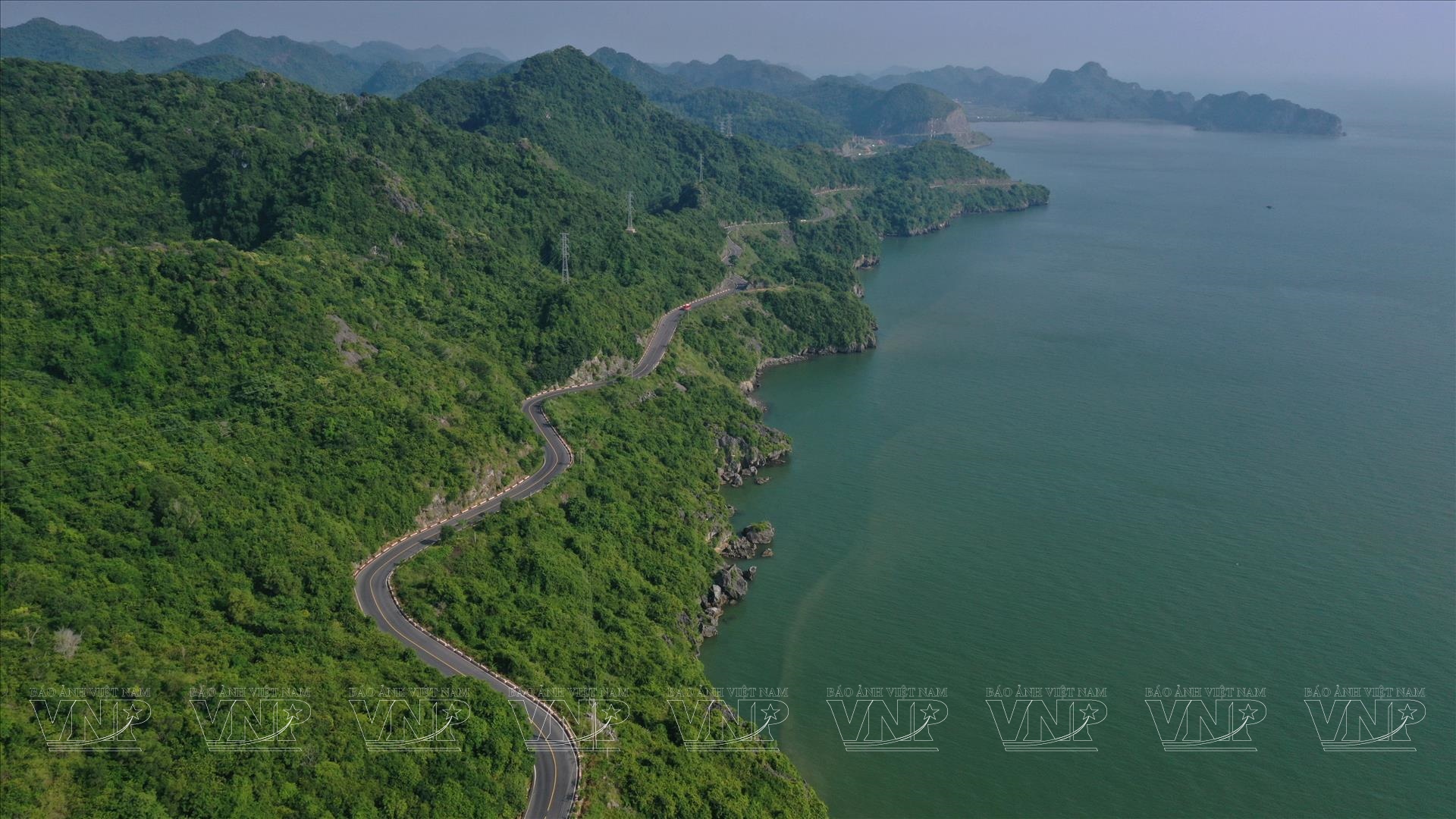 The beautiful coastal cross-island road on Cat Ba Island. Photo: Cong Dat/Vietnam Pictorial
The beautiful coastal cross-island road on Cat Ba Island. Photo: Cong Dat/Vietnam Pictorial 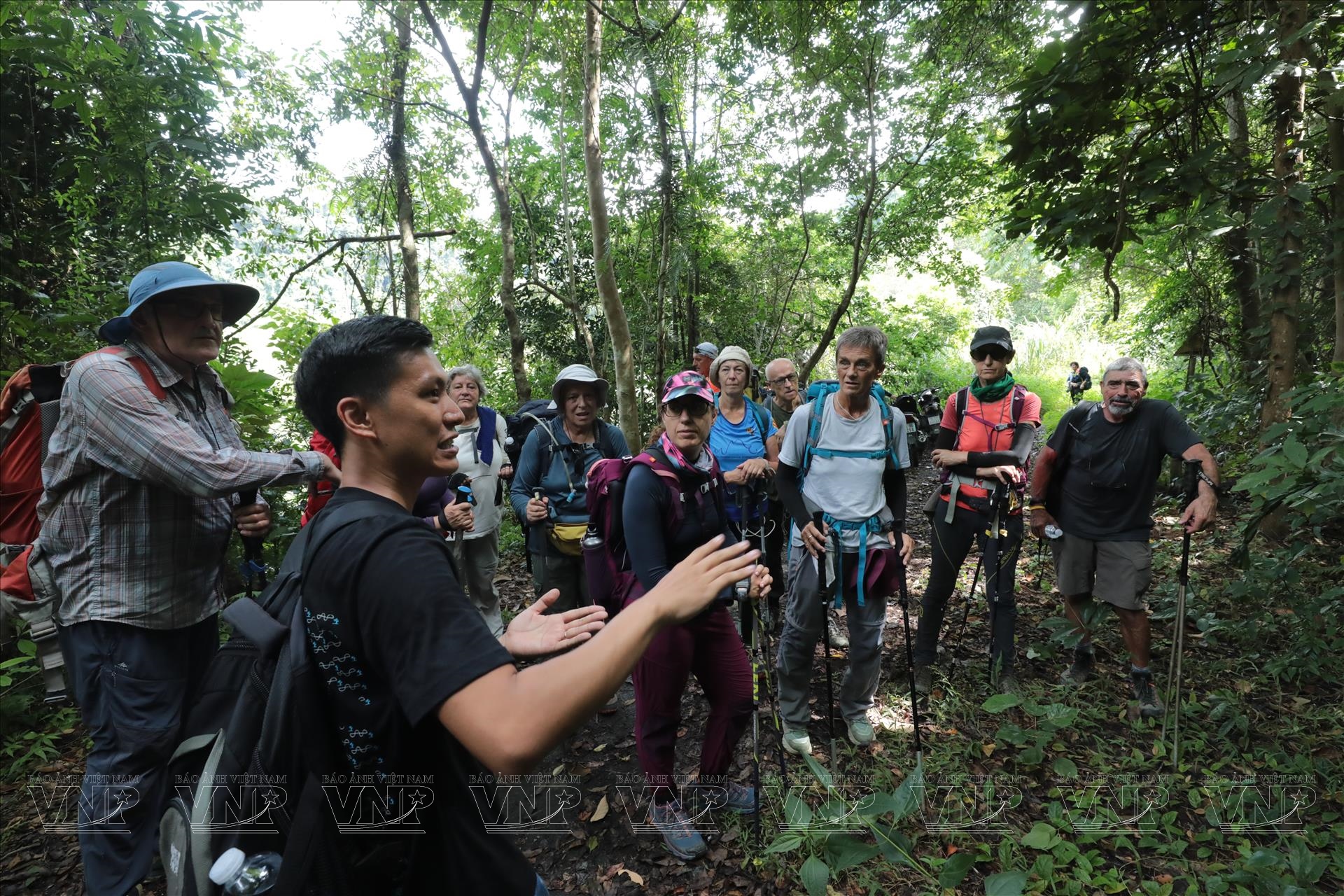
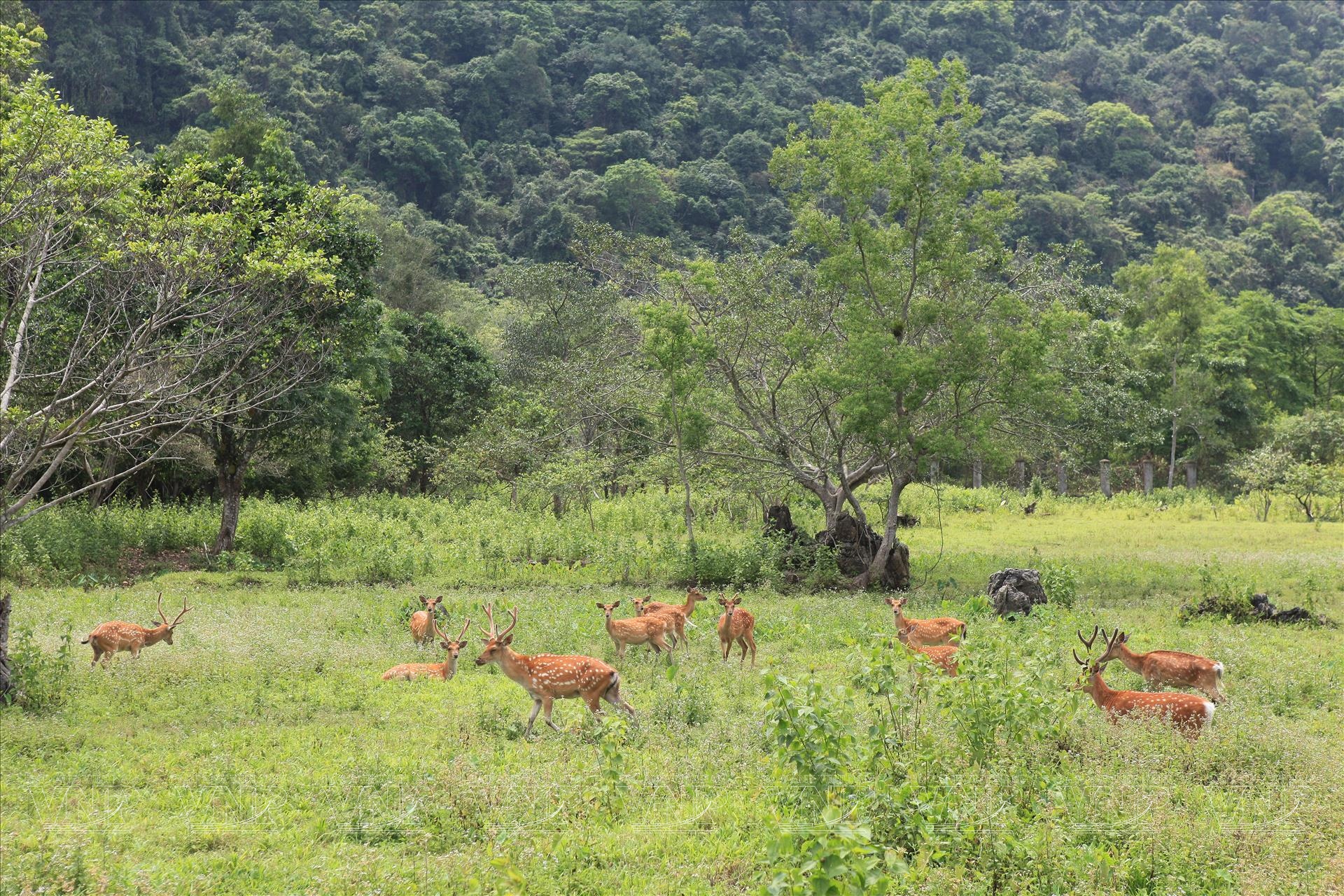
With its outstanding global values in terms of landscape, geology, geomorphology and biodiversity, the World Natural Heritage of Ha Long Bay - Cat Ba Archipelago not only contributes to the world heritage treasure of a priceless treasure of nature but also promises to become an indispensable destination for tourists when coming to Vietnam. Source: https://baobinhphuoc.com.vn/goc-anh//2086/ki-vi-di-san-the-gioi-vinh-ha-long-quan-dao-cat-ba

 The world has known a lot about Ha Long Bay, a famous landscape of Vietnam that was twice recognized by UNESCO as a World Natural Heritage in 1994 and 2000. Ha Long Bay has an area of 1,553 square kilometers with 1,969 islands, of which 90% are limestone islands, with heights ranging from 50m to 200m, formed more than 500 million years ago through complex tectonic movements and strong, long-term karst weathering, creating islands with unique shapes. In particular, in the core area of the Bay, about 330 square kilometers wide, there are dense clusters of more than 770 large and small islands.
The world has known a lot about Ha Long Bay, a famous landscape of Vietnam that was twice recognized by UNESCO as a World Natural Heritage in 1994 and 2000. Ha Long Bay has an area of 1,553 square kilometers with 1,969 islands, of which 90% are limestone islands, with heights ranging from 50m to 200m, formed more than 500 million years ago through complex tectonic movements and strong, long-term karst weathering, creating islands with unique shapes. In particular, in the core area of the Bay, about 330 square kilometers wide, there are dense clusters of more than 770 large and small islands. 
 The islands and caves in Ha Long are diverse. Based on their shapes and rich imagination, people have given them many different interesting names such as: Rooster and Hen Island, Dragon Island, Toad Island, Beaver Head Island, Horse Saddle Island, Fighting Cock Island, Beetle Island, Incense Burner Island, Chopsticks Island, Crescent Island, Conical Hat Island, Ear Island, Human Head Island, Buddha Island, Sung Sot Cave, Virgin Cave... With its majestic beauty, in recent times, the World Natural Heritage Ha Long Bay has always been the top destination for domestic and international tourists, contributing to economic growth and promoting the image of Vietnam.
The islands and caves in Ha Long are diverse. Based on their shapes and rich imagination, people have given them many different interesting names such as: Rooster and Hen Island, Dragon Island, Toad Island, Beaver Head Island, Horse Saddle Island, Fighting Cock Island, Beetle Island, Incense Burner Island, Chopsticks Island, Crescent Island, Conical Hat Island, Ear Island, Human Head Island, Buddha Island, Sung Sot Cave, Virgin Cave... With its majestic beauty, in recent times, the World Natural Heritage Ha Long Bay has always been the top destination for domestic and international tourists, contributing to economic growth and promoting the image of Vietnam.  If Ha Long Bay has been twice honored by UNESCO as a World Natural Heritage, then right next to it, Cat Ba Archipelago of Hai Phong city has also been recognized as a World Biosphere Reserve since 2004.
If Ha Long Bay has been twice honored by UNESCO as a World Natural Heritage, then right next to it, Cat Ba Archipelago of Hai Phong city has also been recognized as a World Biosphere Reserve since 2004.  Lan Ha Bay area. Photo: Cong Dat/Vietnam Pictorial Newspaper In 2013, Vietnam built a dossier to nominate Cat Ba Archipelago as a World Natural Heritage. However, with the recommendation of the World Heritage Committee, Vietnam has researched and completed the dossier on the basis of merging Cat Ba Archipelago with Ha Long Bay to form a new heritage complex with a larger, more diverse and unique scale. On September 16, 2023, at the 45th session of the World Heritage Committee held in Riyadh (Saudi Arabia), UNESCO officially approved the nomination dossier, recognizing Ha Long Bay - Cat Ba Archipelago (belonging to Quang Ninh province and Hai Phong city) as a World Natural Heritage. The recognition of Ha Long Bay - Cat Ba Archipelago as a World Natural Heritage not only creates the first unique inter-regional world heritage in Vietnam but also increases the value of this vast, majestic and beautiful heritage area. Speaking specifically about the Cat Ba Archipelago, this place has a total area of 336 km², located in the middle of the Gulf of Tonkin, about 30 km from the center of Hai Phong City. The whole area has 358 large and small limestone islands clustered together with high density, dividing the sea surface into small bays and many sandbanks, creating a wild and interesting landscape.
Lan Ha Bay area. Photo: Cong Dat/Vietnam Pictorial Newspaper In 2013, Vietnam built a dossier to nominate Cat Ba Archipelago as a World Natural Heritage. However, with the recommendation of the World Heritage Committee, Vietnam has researched and completed the dossier on the basis of merging Cat Ba Archipelago with Ha Long Bay to form a new heritage complex with a larger, more diverse and unique scale. On September 16, 2023, at the 45th session of the World Heritage Committee held in Riyadh (Saudi Arabia), UNESCO officially approved the nomination dossier, recognizing Ha Long Bay - Cat Ba Archipelago (belonging to Quang Ninh province and Hai Phong city) as a World Natural Heritage. The recognition of Ha Long Bay - Cat Ba Archipelago as a World Natural Heritage not only creates the first unique inter-regional world heritage in Vietnam but also increases the value of this vast, majestic and beautiful heritage area. Speaking specifically about the Cat Ba Archipelago, this place has a total area of 336 km², located in the middle of the Gulf of Tonkin, about 30 km from the center of Hai Phong City. The whole area has 358 large and small limestone islands clustered together with high density, dividing the sea surface into small bays and many sandbanks, creating a wild and interesting landscape. 

 Panoramic view of Cat Ba town from above. Photo: Cong Dat/Vietnam Pictorial Newspaper Cat Ba Island is the largest island, with an area of 153km², the third largest island in Vietnam, after Phu Quoc and Cai Bau, with the highest mountain peak reaching 331m. This is a submerged tropical karst terrain area, with a unique landscape similar to Ha Long Bay. The islands are often pyramidal or karst tower-shaped with steep cliffs standing out on the clear blue sea. On Cat Ba Island, there are many famous caves and beautiful places such as Trung Trang Cave, Hung Son Cave, Gia Luan island commune, Viet Hai ancient fishing village... Cat Ba archipelago has tropical rainforests on limestone islands, mangrove forests, coral reefs, seaweed beds - seagrass, cave systems, lakes... which are places that fully converge biodiversity conservation values, ensuring the requirements of the World Biosphere Reserve according to UNESCO regulations. In the cool autumn weather, we had a tour to explore Cat Ba archipelago. Following the advice of the local people, we started our journey with a tour to explore "Lan Ha Bay - Sang Cave, Toi Cave - Viet Hai Village - Cat Dua Island". This is the most typical tour of Cat Ba. The group rented a small wooden boat from the locals to move from Cai Beo wharf to Lan Ha Bay. Lan Ha Bay is located in the east of Cat Ba Island, where the islands are densely clustered, forming more than a hundred natural beaches with clear, cool water. In Lan Ha Bay, visitors can use kayaks to move on the clear blue water to see the coral reefs at Van Boi beach, Van Ha beach, see the islands of many shapes such as But island, Con Rua island, Nui Doi island... and explore caves such as Sang cave, Toi cave, Vem cave, Ham Rong cave... with an extremely refreshing feeling in the middle of the ocean waves.
Panoramic view of Cat Ba town from above. Photo: Cong Dat/Vietnam Pictorial Newspaper Cat Ba Island is the largest island, with an area of 153km², the third largest island in Vietnam, after Phu Quoc and Cai Bau, with the highest mountain peak reaching 331m. This is a submerged tropical karst terrain area, with a unique landscape similar to Ha Long Bay. The islands are often pyramidal or karst tower-shaped with steep cliffs standing out on the clear blue sea. On Cat Ba Island, there are many famous caves and beautiful places such as Trung Trang Cave, Hung Son Cave, Gia Luan island commune, Viet Hai ancient fishing village... Cat Ba archipelago has tropical rainforests on limestone islands, mangrove forests, coral reefs, seaweed beds - seagrass, cave systems, lakes... which are places that fully converge biodiversity conservation values, ensuring the requirements of the World Biosphere Reserve according to UNESCO regulations. In the cool autumn weather, we had a tour to explore Cat Ba archipelago. Following the advice of the local people, we started our journey with a tour to explore "Lan Ha Bay - Sang Cave, Toi Cave - Viet Hai Village - Cat Dua Island". This is the most typical tour of Cat Ba. The group rented a small wooden boat from the locals to move from Cai Beo wharf to Lan Ha Bay. Lan Ha Bay is located in the east of Cat Ba Island, where the islands are densely clustered, forming more than a hundred natural beaches with clear, cool water. In Lan Ha Bay, visitors can use kayaks to move on the clear blue water to see the coral reefs at Van Boi beach, Van Ha beach, see the islands of many shapes such as But island, Con Rua island, Nui Doi island... and explore caves such as Sang cave, Toi cave, Vem cave, Ham Rong cave... with an extremely refreshing feeling in the middle of the ocean waves. 

 On the boat down Lan Ha Bay, we saw several groups of foreign tourists conquering the steep cliffs on the cliffs. It is known that Cat Hai district has planned 9 climbing routes to serve adventurous tourists. For example, Tien Ong island is one of the climbing spots chosen by many tourists because the cliffs have many beautiful stalactites.
On the boat down Lan Ha Bay, we saw several groups of foreign tourists conquering the steep cliffs on the cliffs. It is known that Cat Hai district has planned 9 climbing routes to serve adventurous tourists. For example, Tien Ong island is one of the climbing spots chosen by many tourists because the cliffs have many beautiful stalactites.  Tourists take a boat on Lan Ha Bay to visit and explore Sang Cave and Toi Cave. Photo: Cong Dat/Vietnam Pictorial
Tourists take a boat on Lan Ha Bay to visit and explore Sang Cave and Toi Cave. Photo: Cong Dat/Vietnam Pictorial  Tourists explore the marine ecosystem in Cat Ba National Park. Photo: Document The next stop is the ancient fishing village of Viet Hai, a community ecotourism destination that has attracted visitors in recent years. The ancient fishing village of Viet Hai has 90 households living in ancient houses nestled in the middle of a valley surrounded by rocky mountains and old forests. Foreign visitors often choose a trekking tour through the old forests of Cat Ba National Park (accompanied by staff from the Management Board) to reach the ancient fishing village of Viet Hai, then continue on a boat to explore Lan Ha Bay, this tour lasts about 4 hours.
Tourists explore the marine ecosystem in Cat Ba National Park. Photo: Document The next stop is the ancient fishing village of Viet Hai, a community ecotourism destination that has attracted visitors in recent years. The ancient fishing village of Viet Hai has 90 households living in ancient houses nestled in the middle of a valley surrounded by rocky mountains and old forests. Foreign visitors often choose a trekking tour through the old forests of Cat Ba National Park (accompanied by staff from the Management Board) to reach the ancient fishing village of Viet Hai, then continue on a boat to explore Lan Ha Bay, this tour lasts about 4 hours.  Panoramic view of the ancient fishing village of Viet Hai from above. Photo: Cong Dat/Vietnam Pictorial
Panoramic view of the ancient fishing village of Viet Hai from above. Photo: Cong Dat/Vietnam Pictorial 


 Tourists visit the ancient fishing village of Viet Hai. Photo: Thanh Giang/Vietnam Pictorial Newspaper There is another very beautiful and famous spot on Lan Ha Bay, which is Tung Gau Alley, which was used as a filming location in the Hollywood blockbuster Kong: Skull Island. The next day, we rented motorbikes to travel along the beautiful coastal passes and through the forest to Cat Ba National Park to enjoy the rustling sound of the forest wind and explore the endless beauty of the forest, where there are many precious medicinal plants and ancient trees with large roots extending all over the path.
Tourists visit the ancient fishing village of Viet Hai. Photo: Thanh Giang/Vietnam Pictorial Newspaper There is another very beautiful and famous spot on Lan Ha Bay, which is Tung Gau Alley, which was used as a filming location in the Hollywood blockbuster Kong: Skull Island. The next day, we rented motorbikes to travel along the beautiful coastal passes and through the forest to Cat Ba National Park to enjoy the rustling sound of the forest wind and explore the endless beauty of the forest, where there are many precious medicinal plants and ancient trees with large roots extending all over the path.  The beautiful coastal cross-island road on Cat Ba Island. Photo: Cong Dat/Vietnam Pictorial
The beautiful coastal cross-island road on Cat Ba Island. Photo: Cong Dat/Vietnam Pictorial 
 With its outstanding global values in terms of landscape, geology, geomorphology and biodiversity, the World Natural Heritage of Ha Long Bay - Cat Ba Archipelago not only contributes to the world heritage treasure of a priceless treasure of nature but also promises to become an indispensable destination for tourists when coming to Vietnam. Source: https://baobinhphuoc.com.vn/goc-anh//2086/ki-vi-di-san-the-gioi-vinh-ha-long-quan-dao-cat-ba
With its outstanding global values in terms of landscape, geology, geomorphology and biodiversity, the World Natural Heritage of Ha Long Bay - Cat Ba Archipelago not only contributes to the world heritage treasure of a priceless treasure of nature but also promises to become an indispensable destination for tourists when coming to Vietnam. Source: https://baobinhphuoc.com.vn/goc-anh//2086/ki-vi-di-san-the-gioi-vinh-ha-long-quan-dao-cat-ba

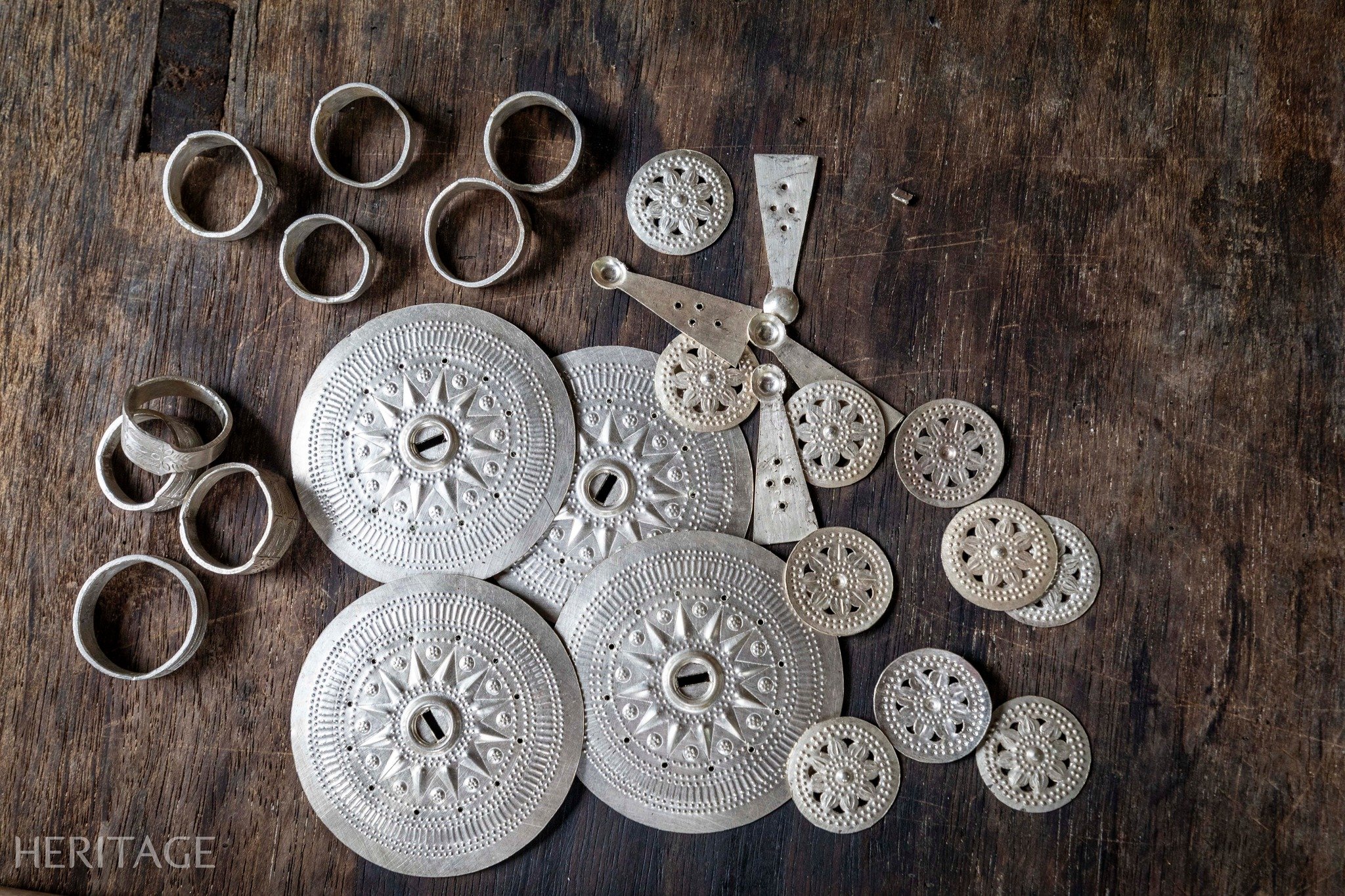

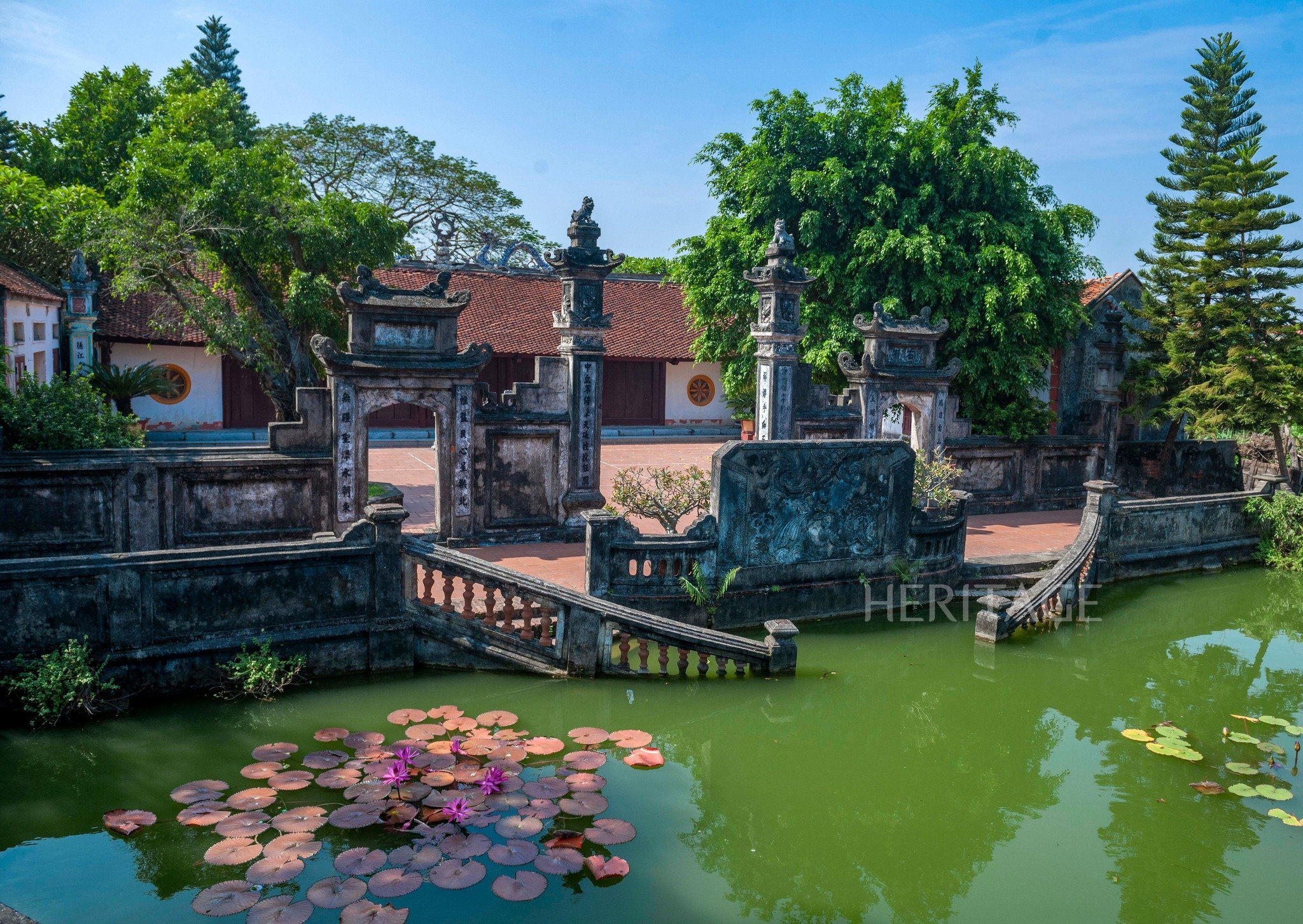

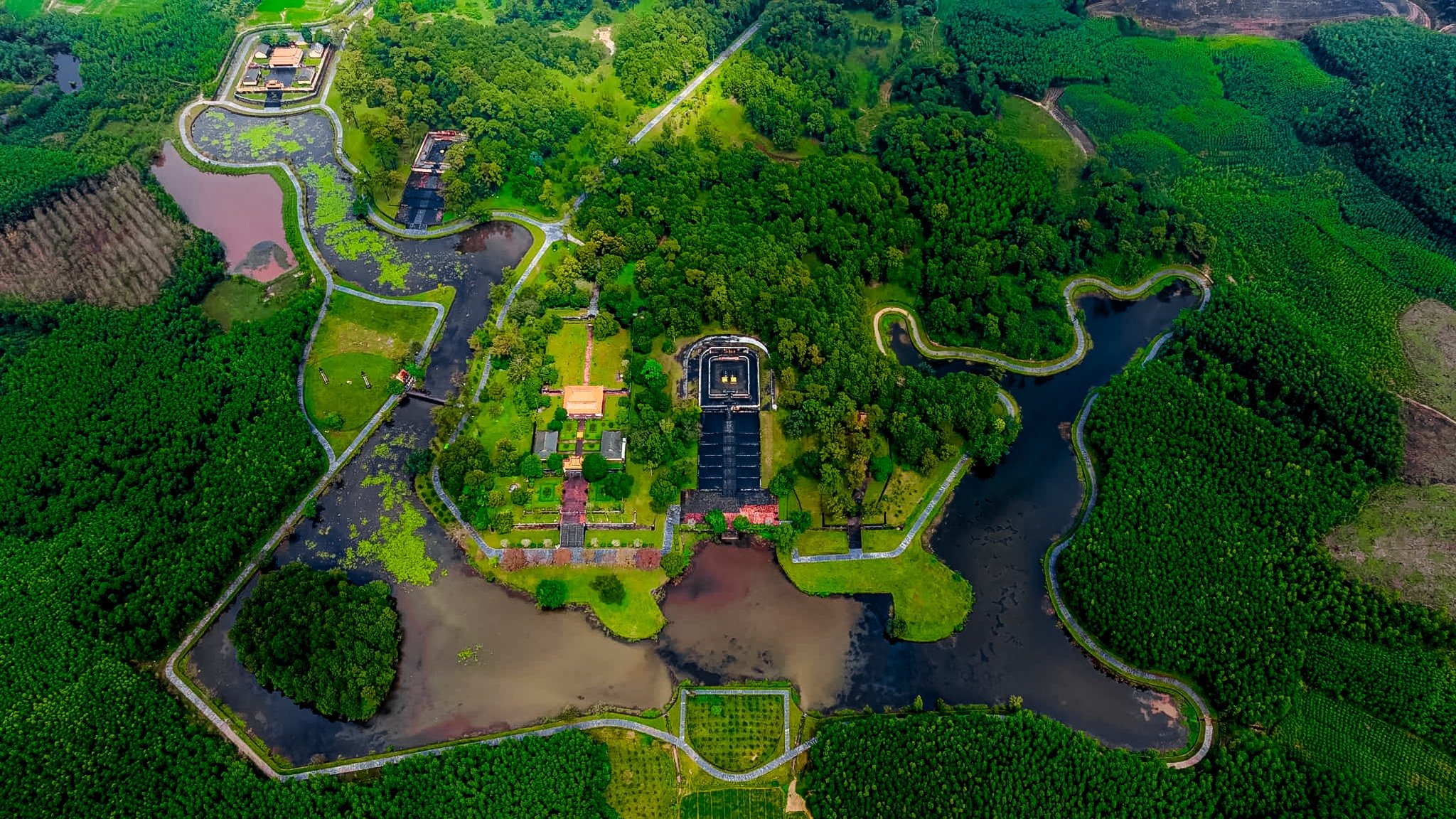

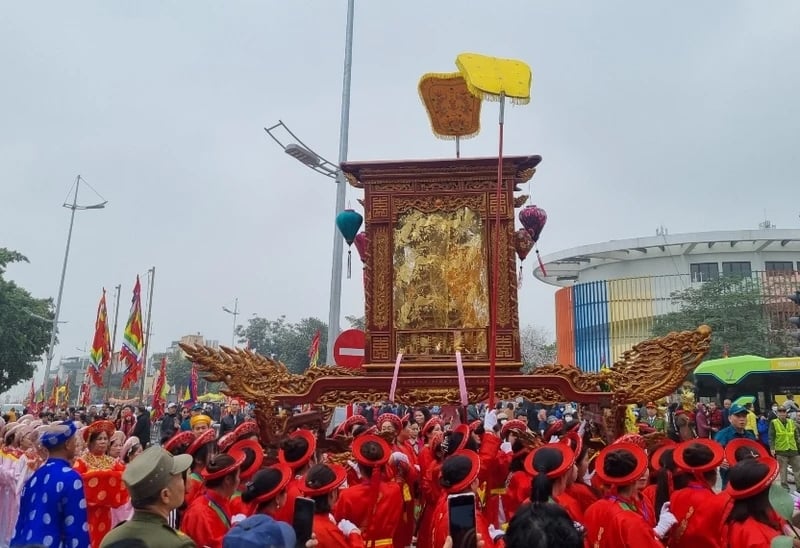

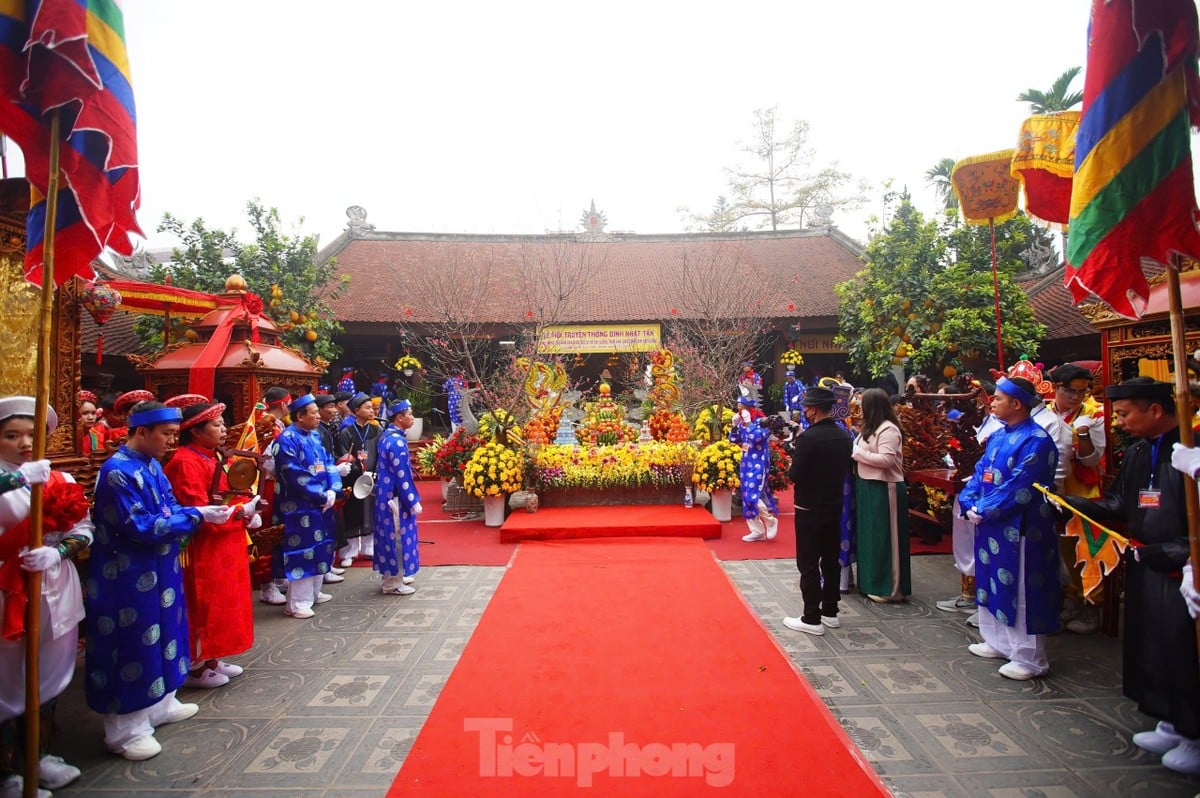

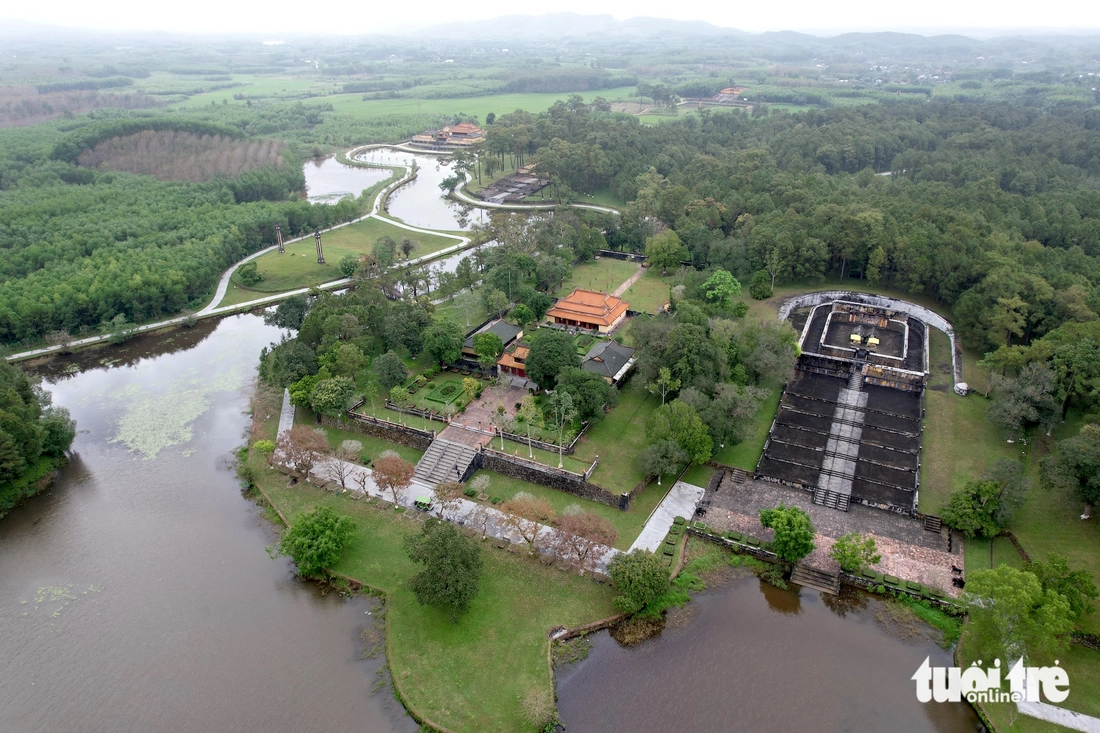

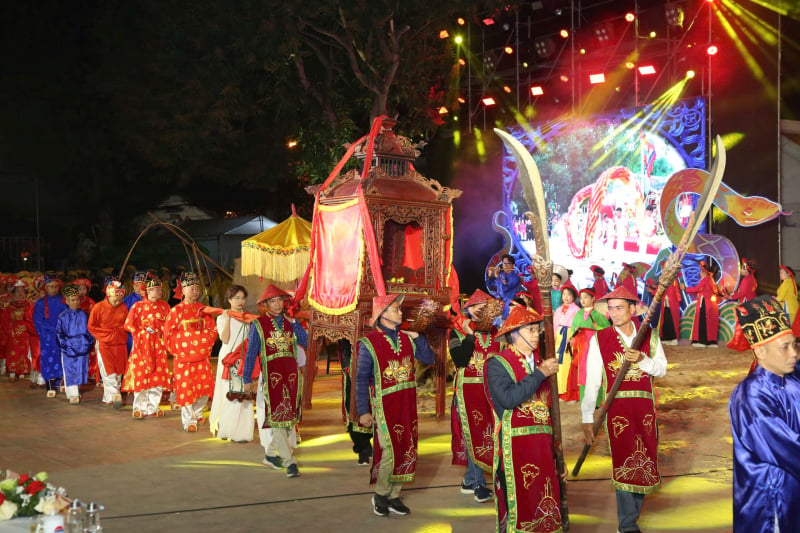

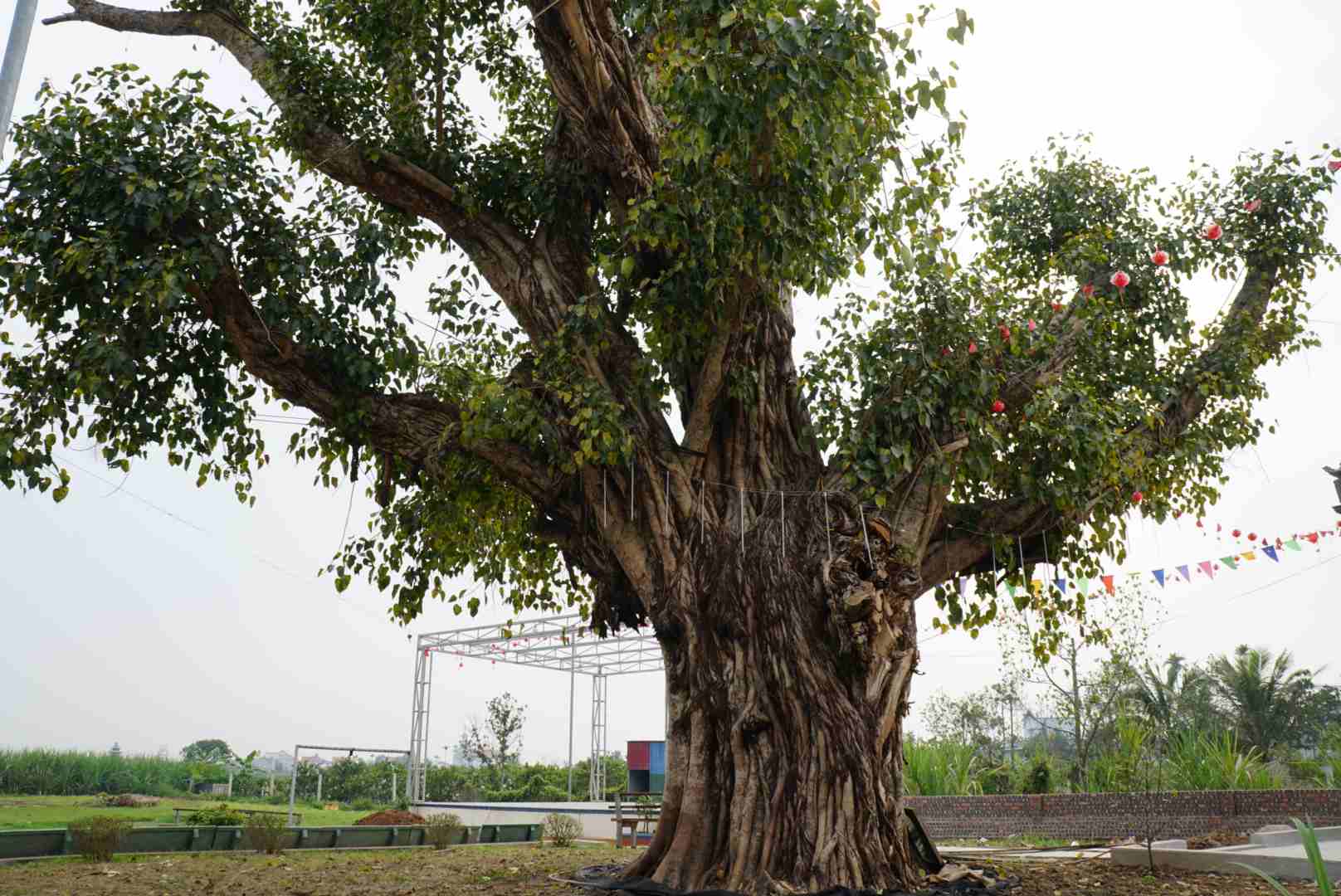



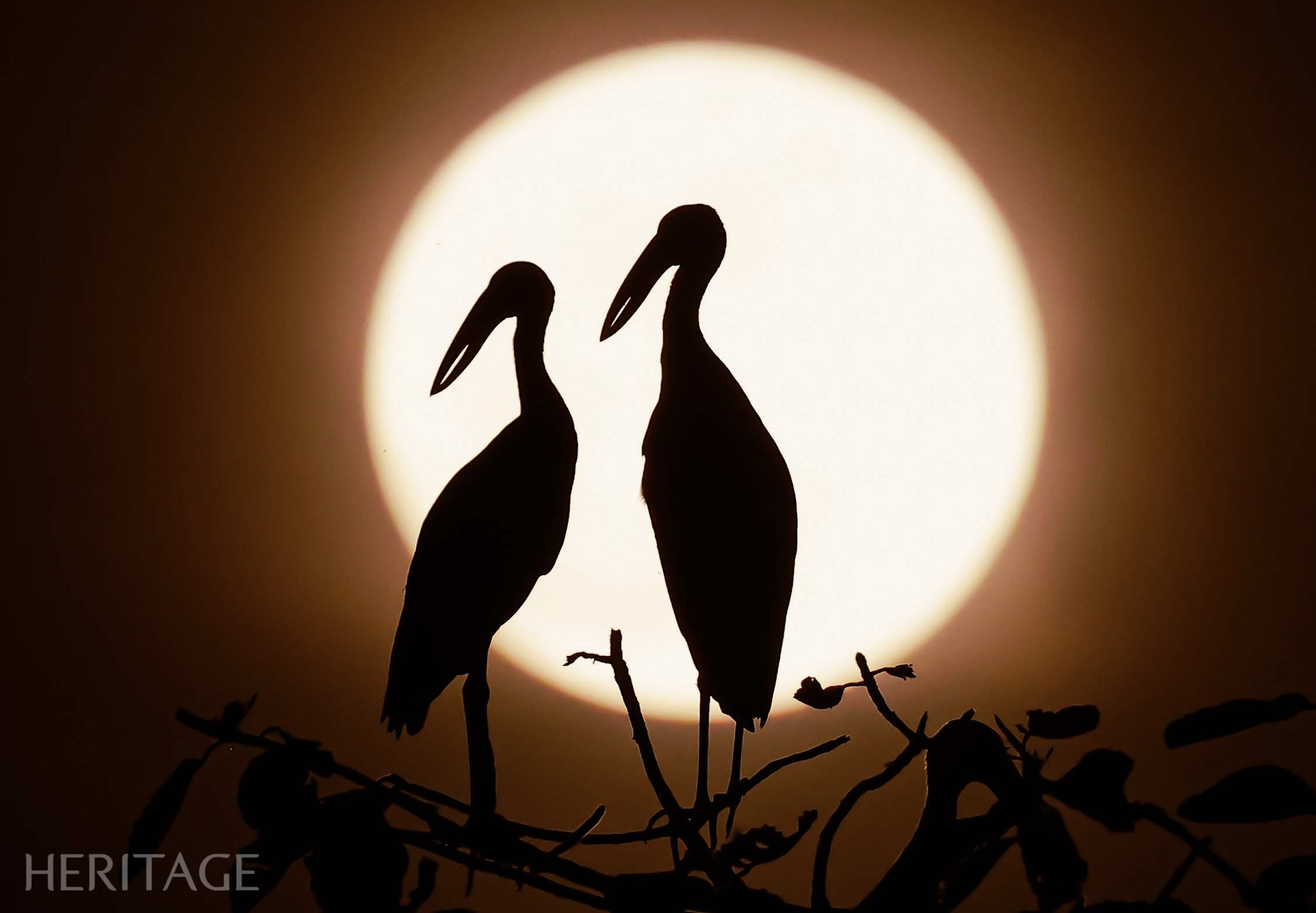
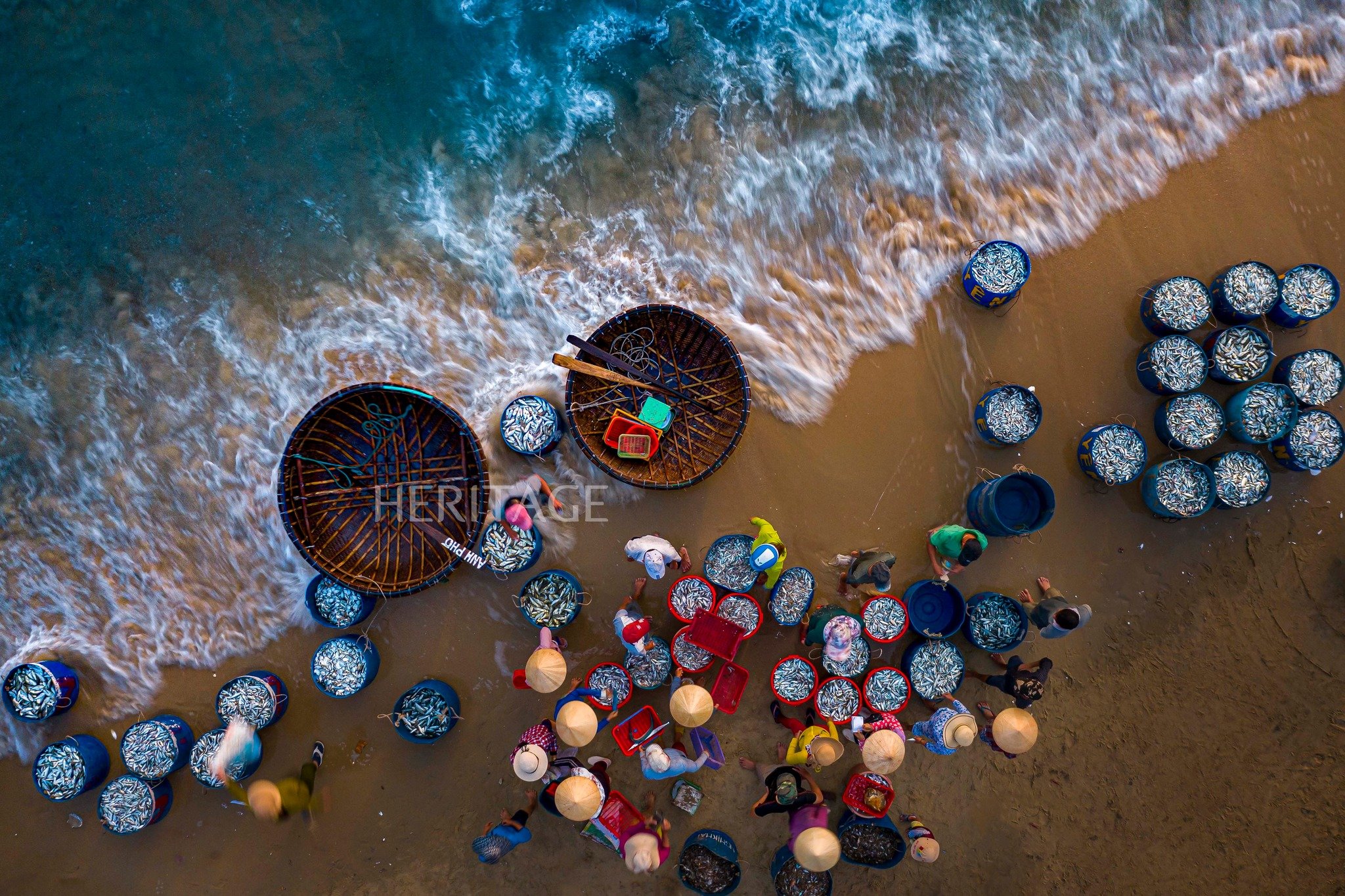





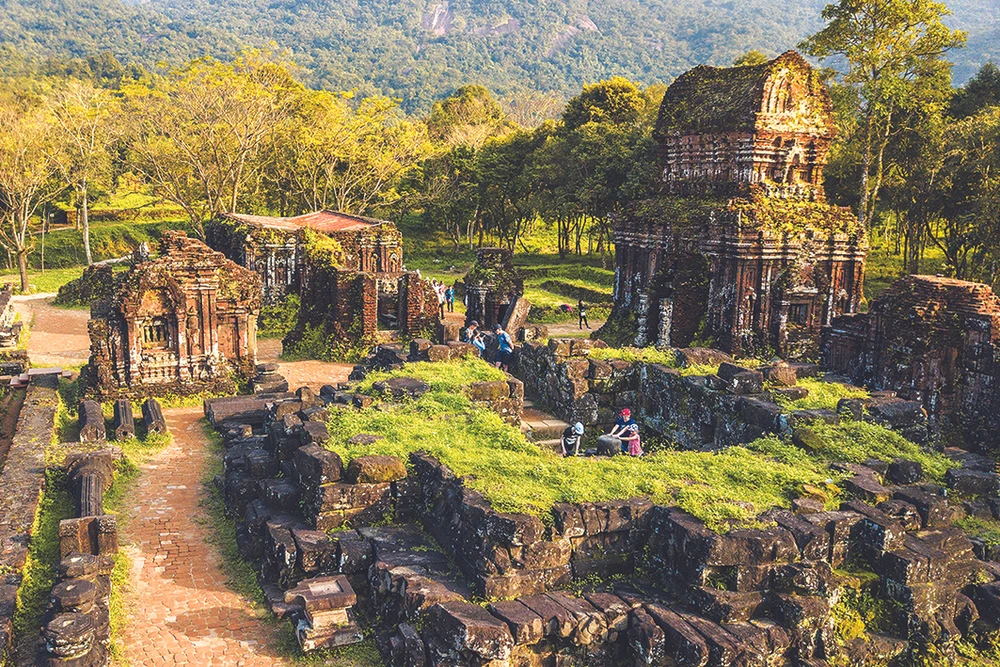


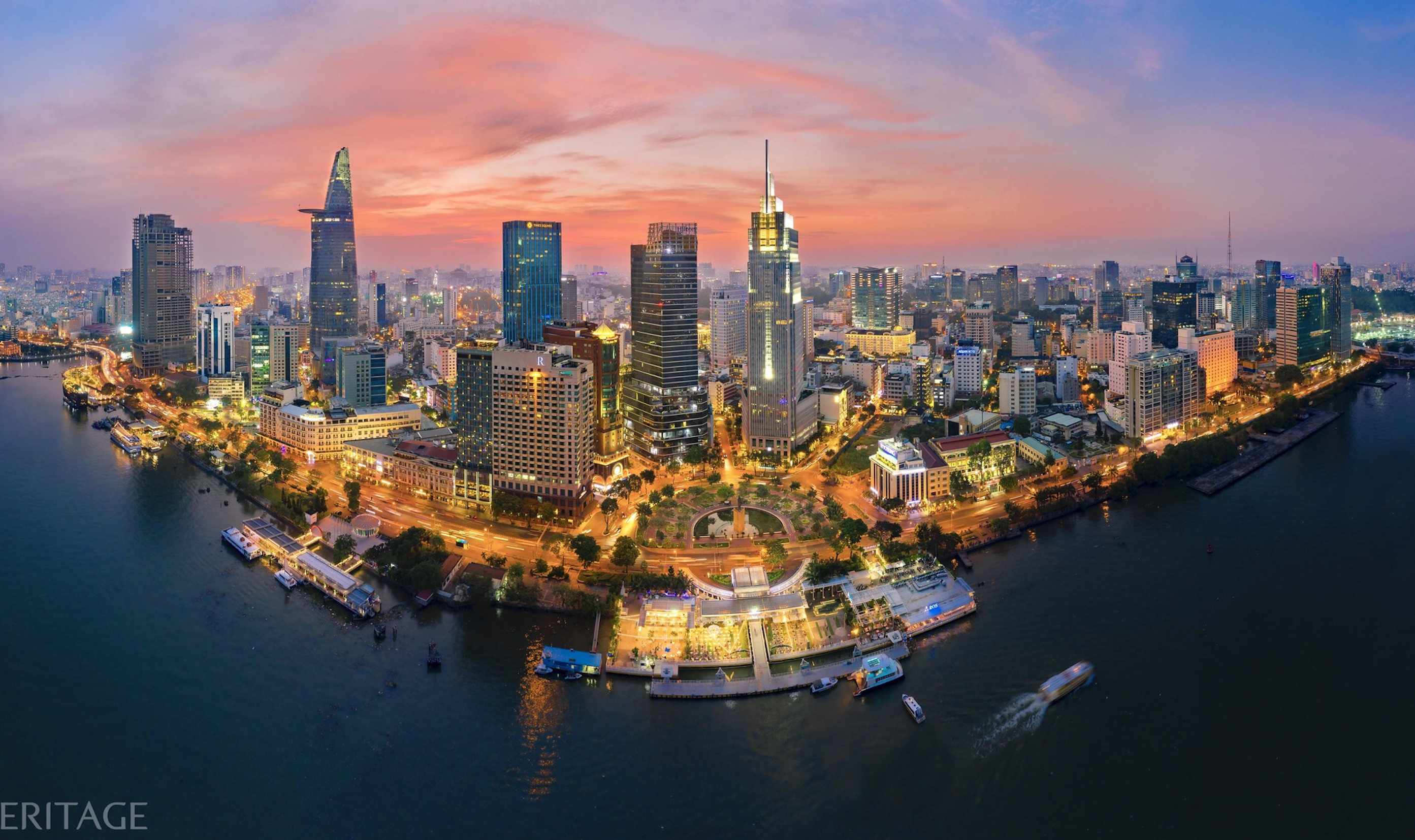
































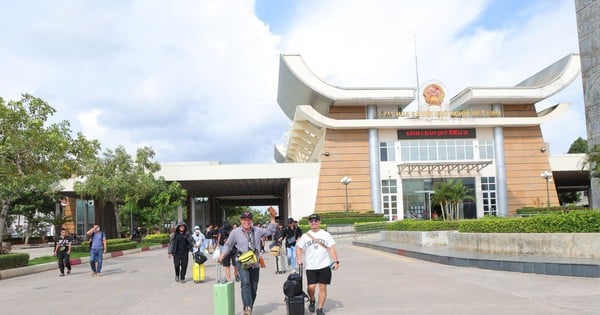








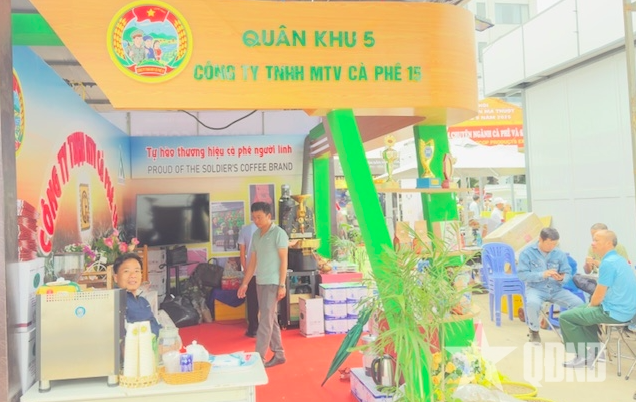

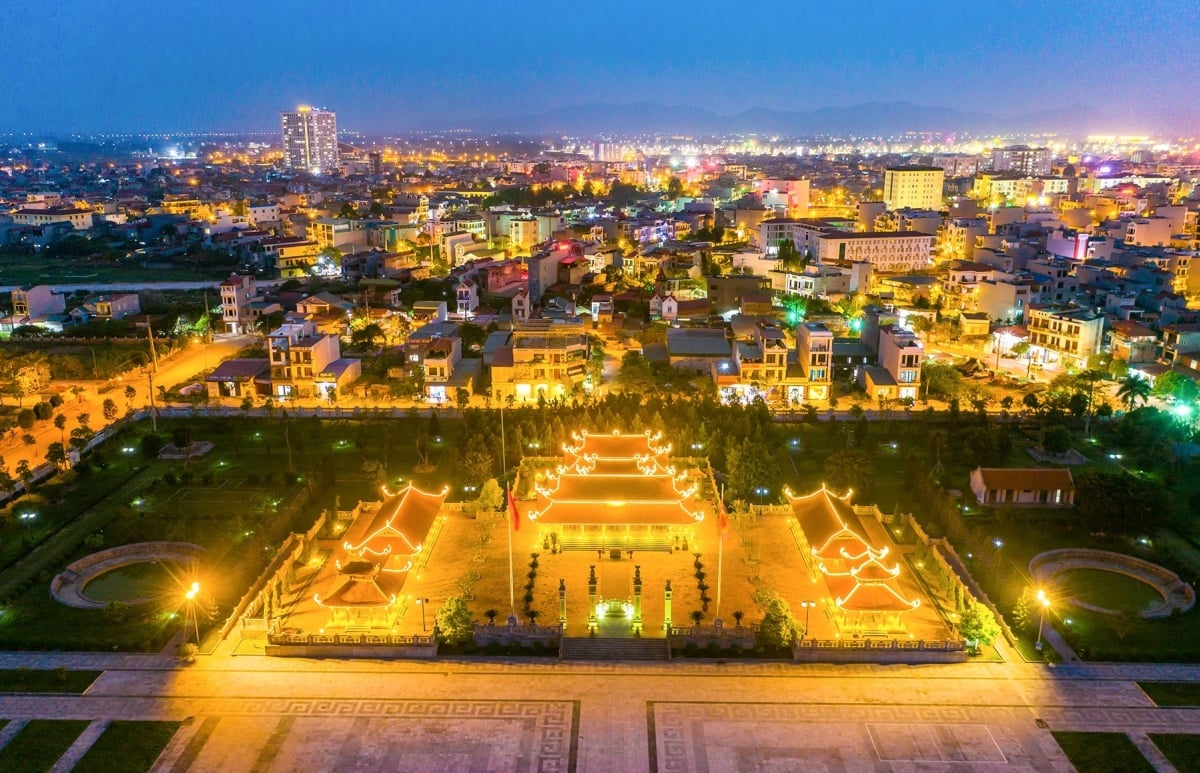
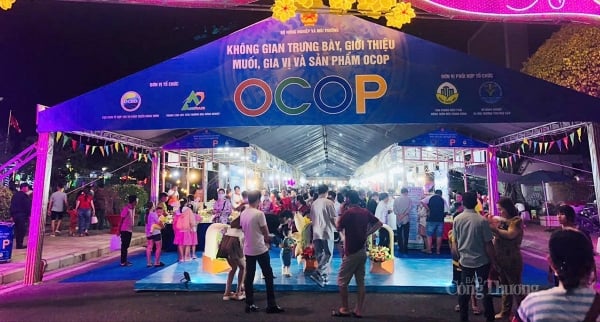




Comment (0)